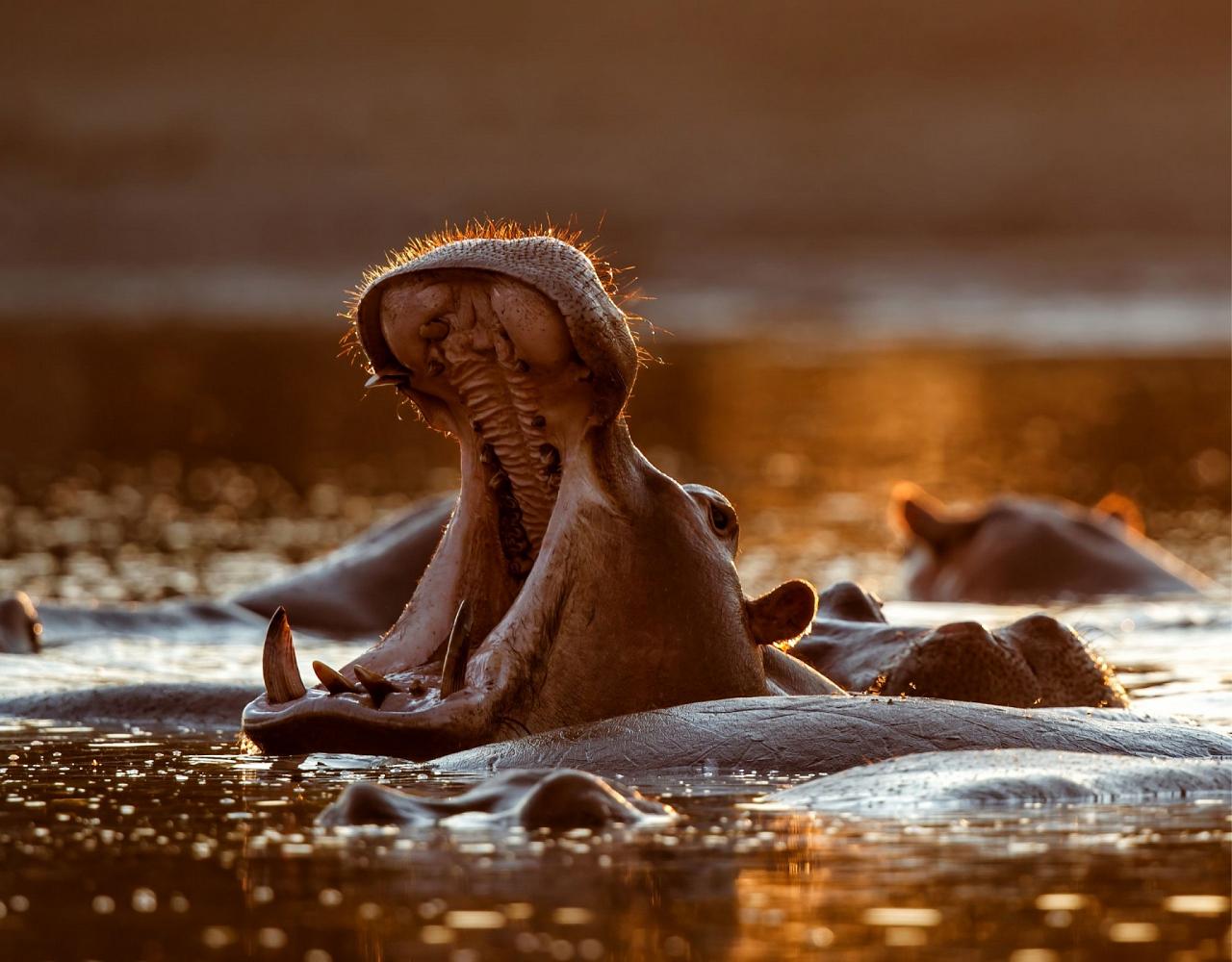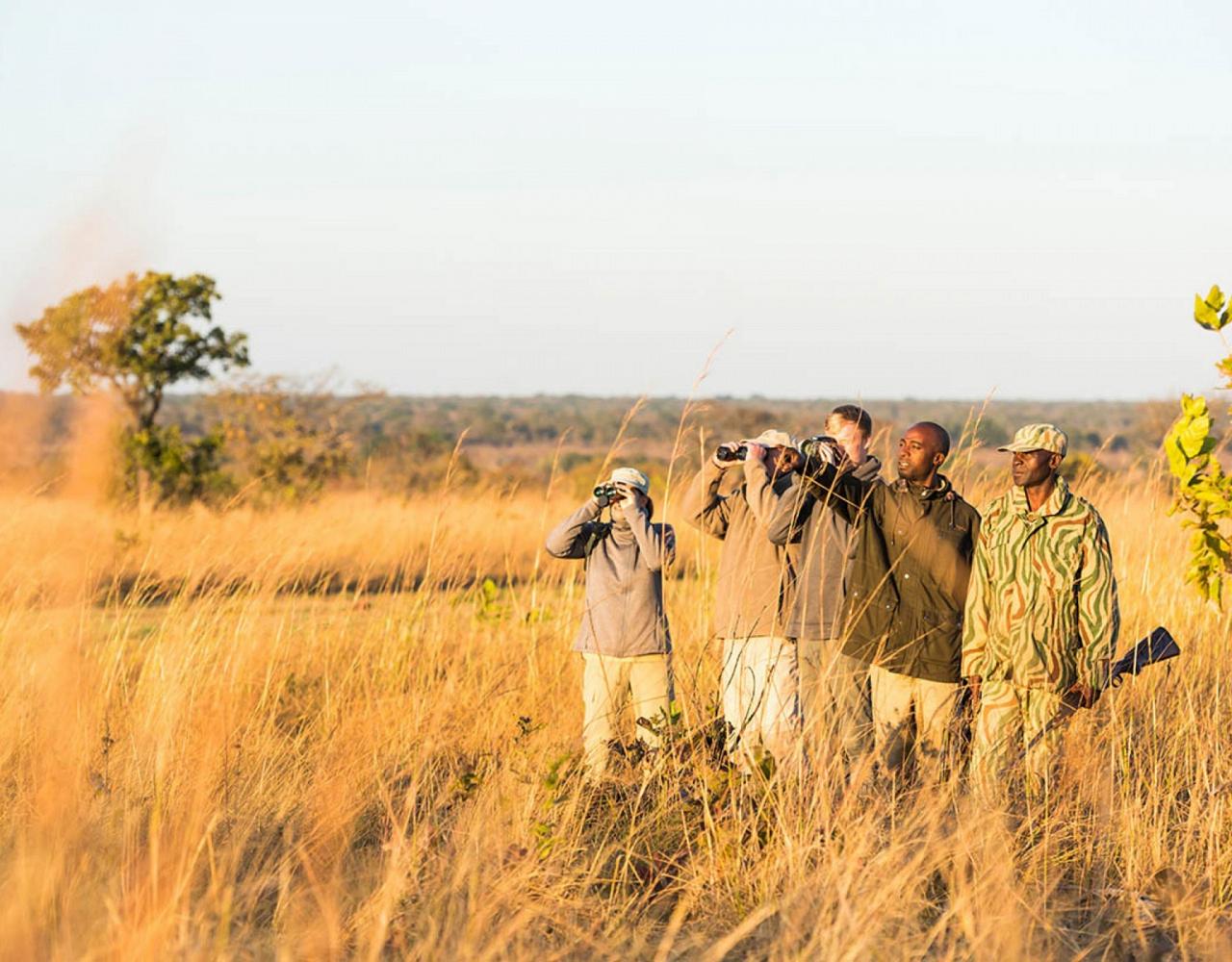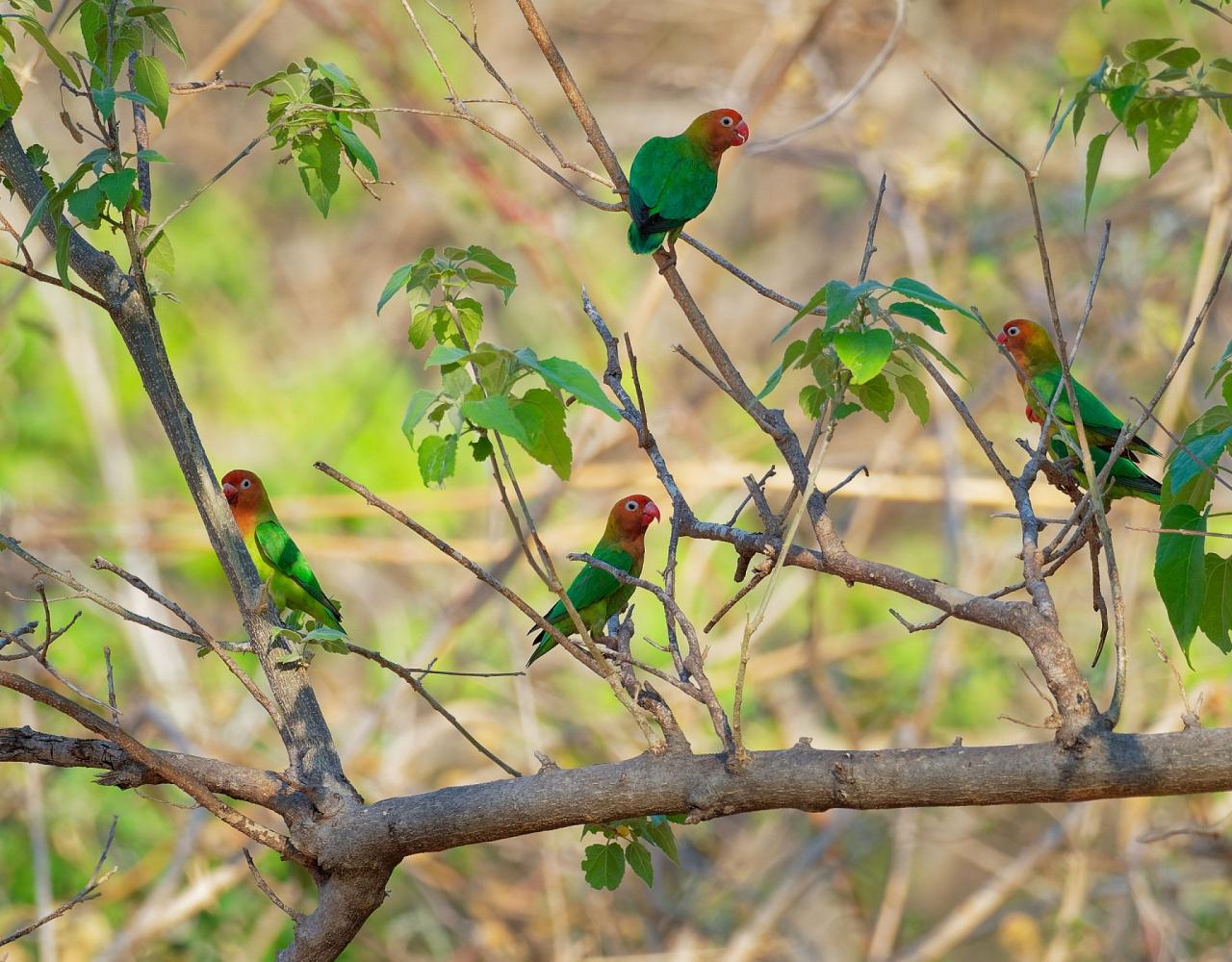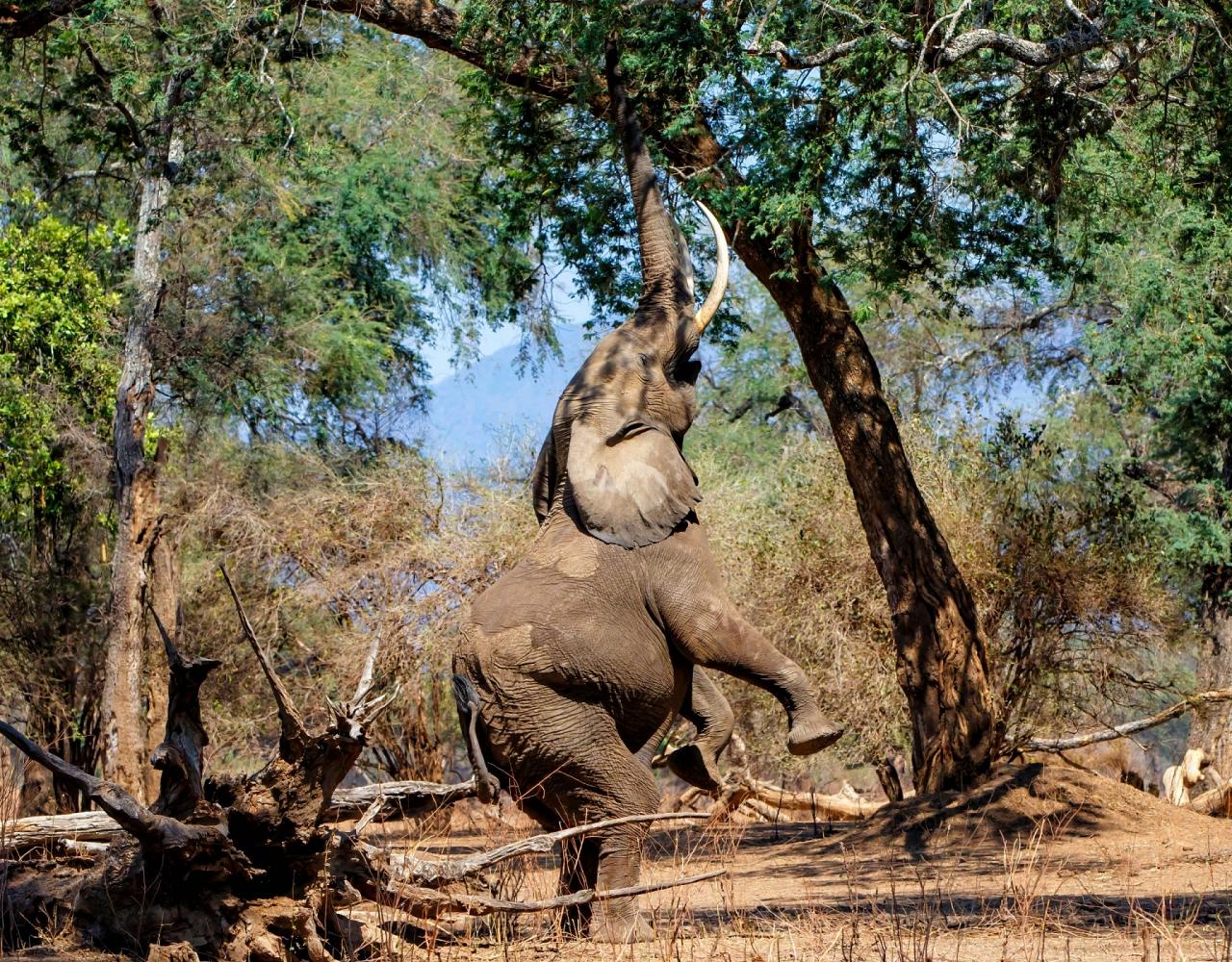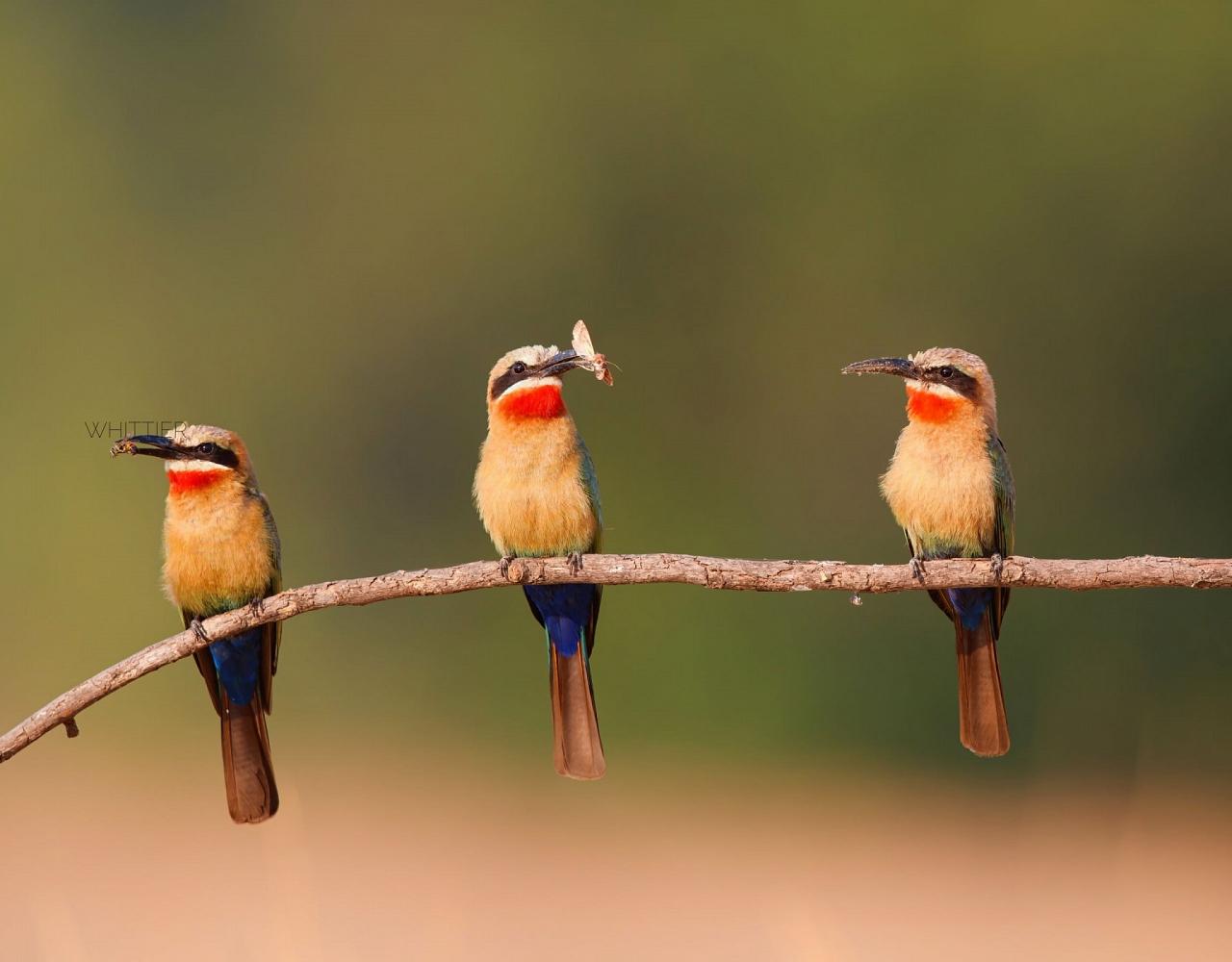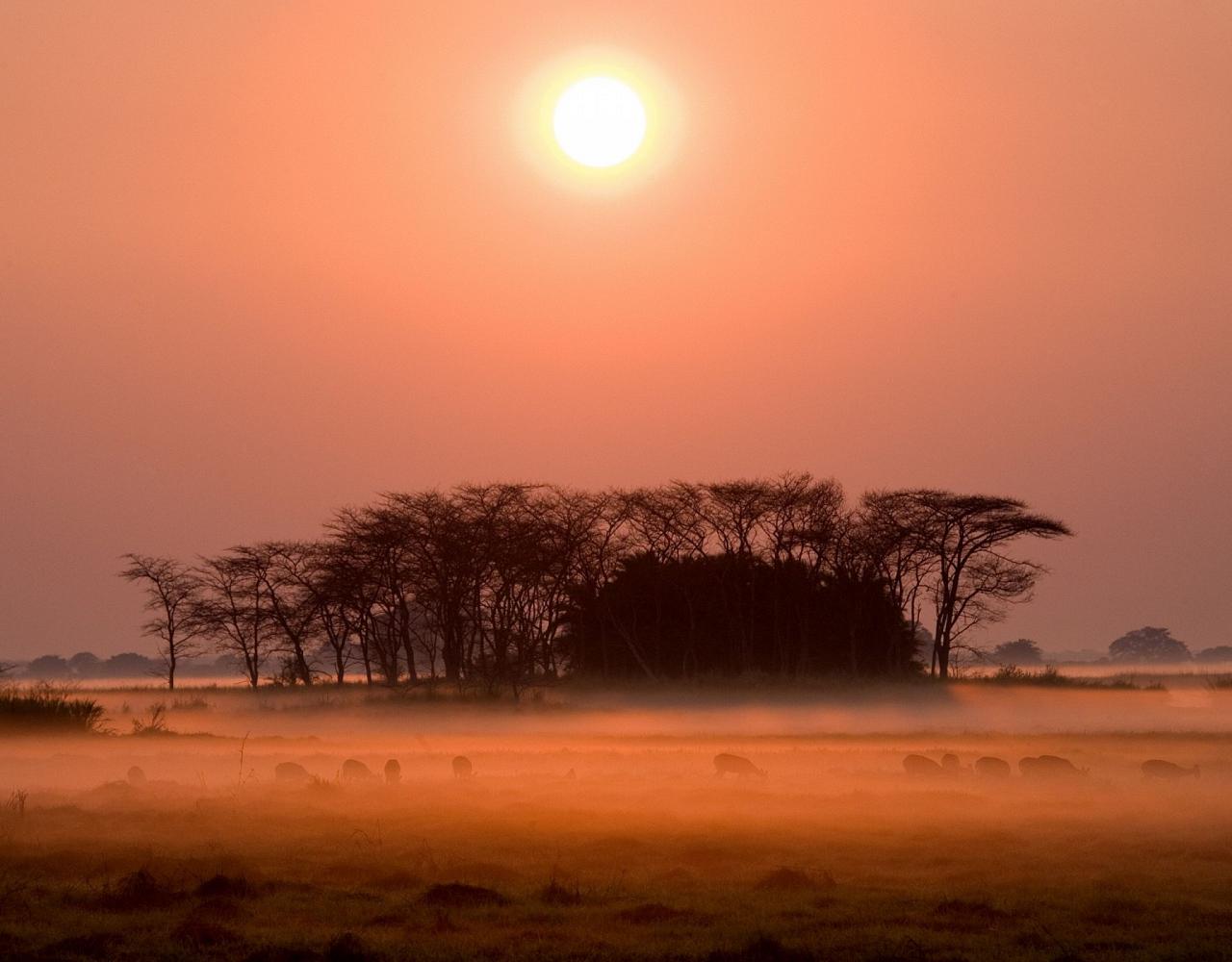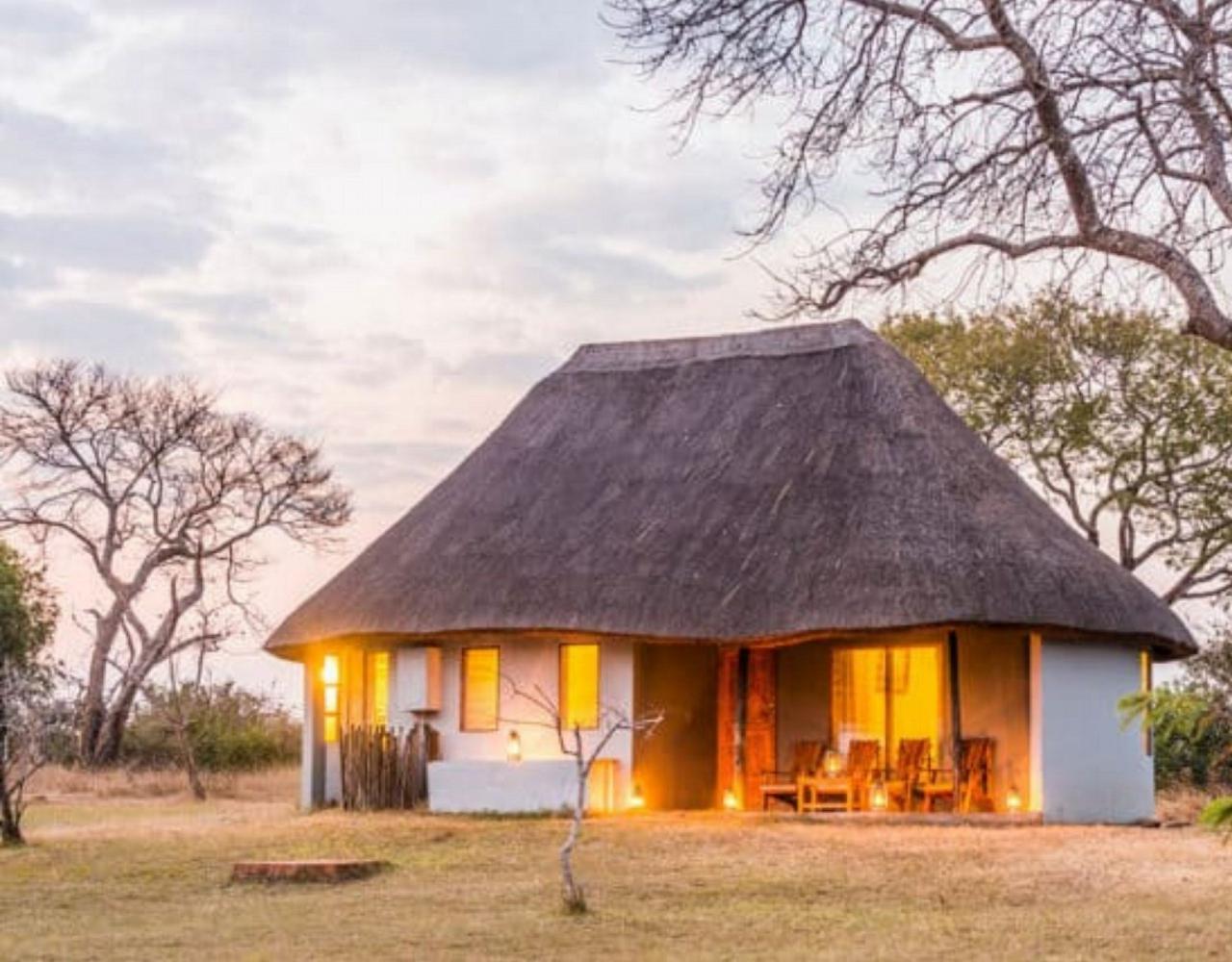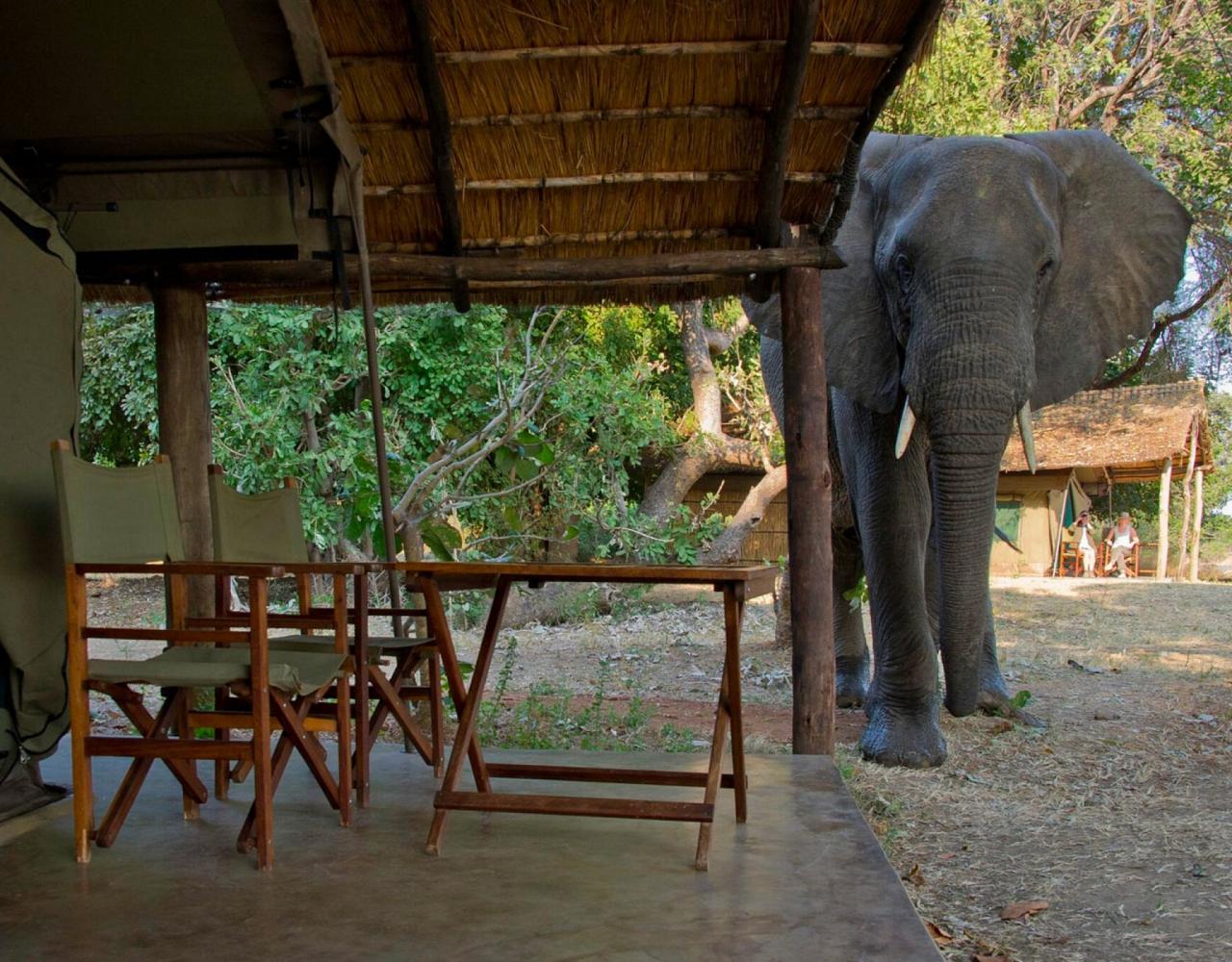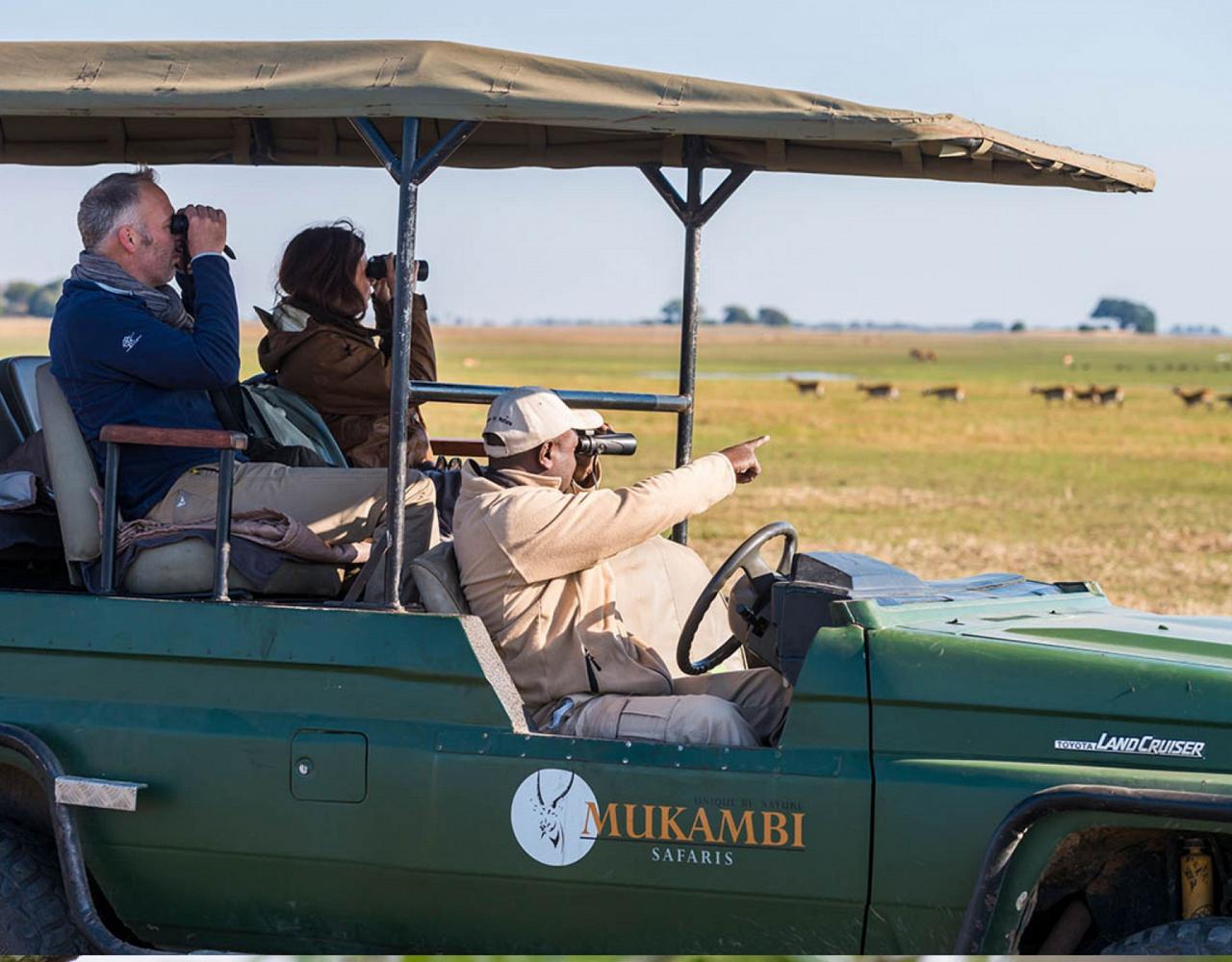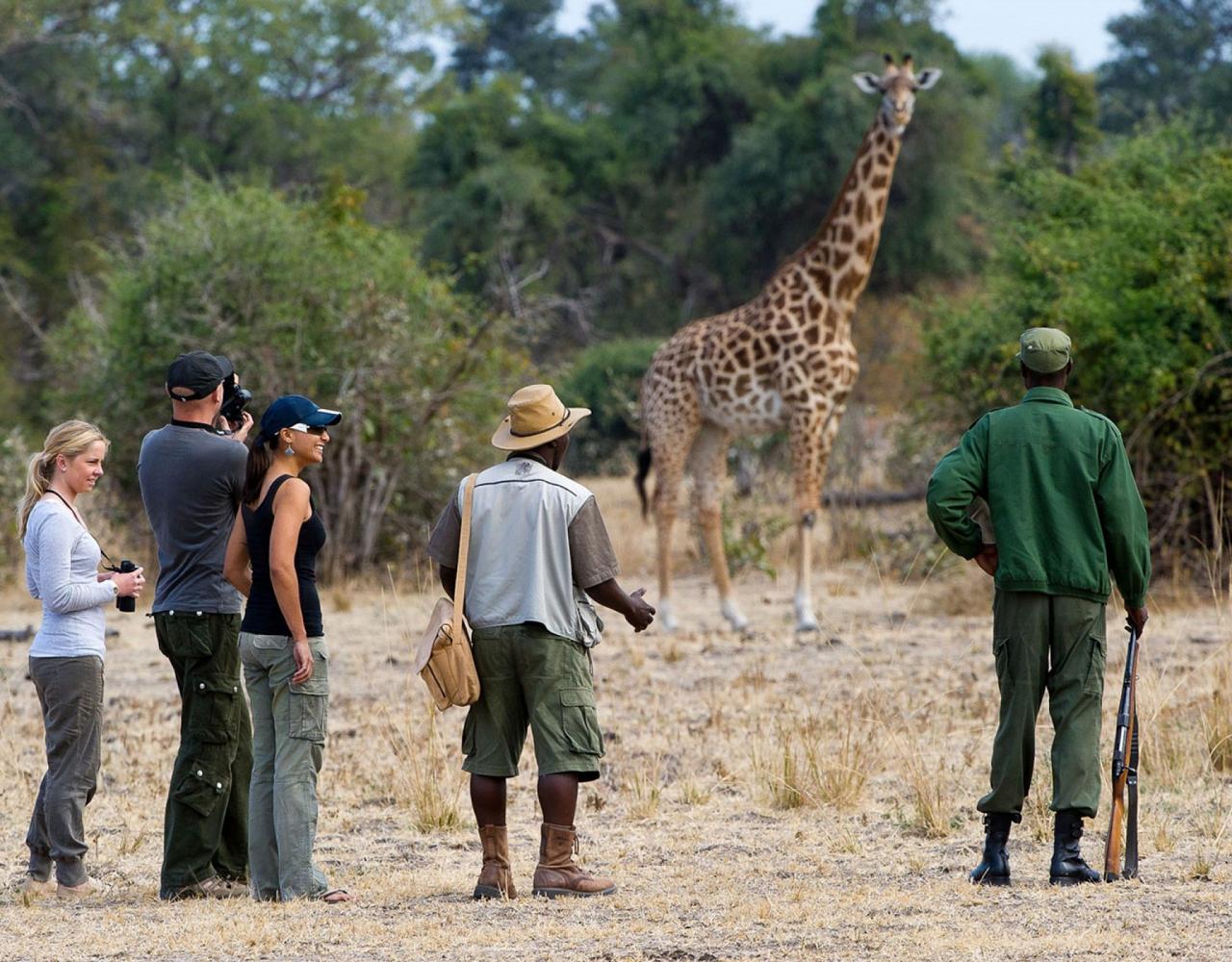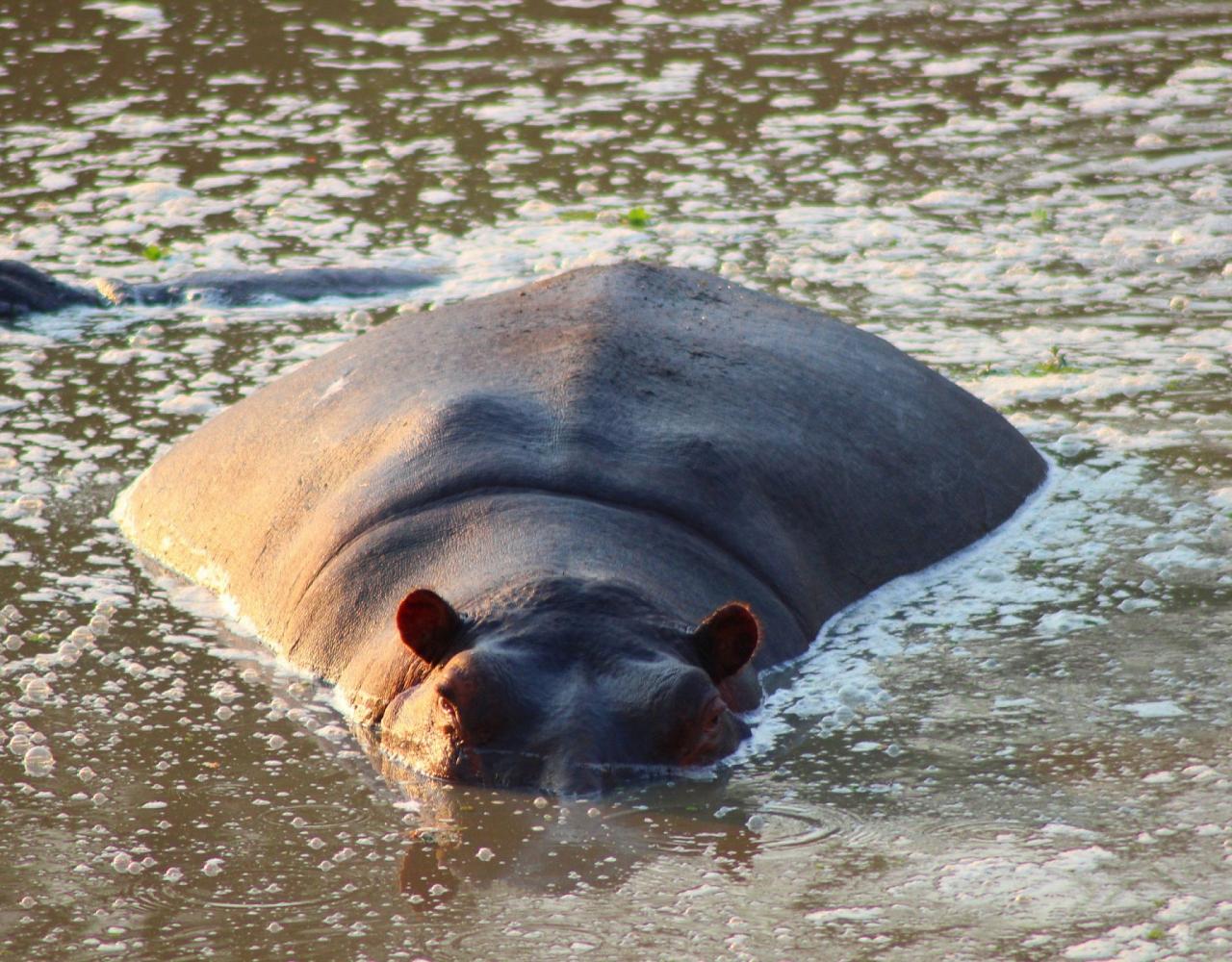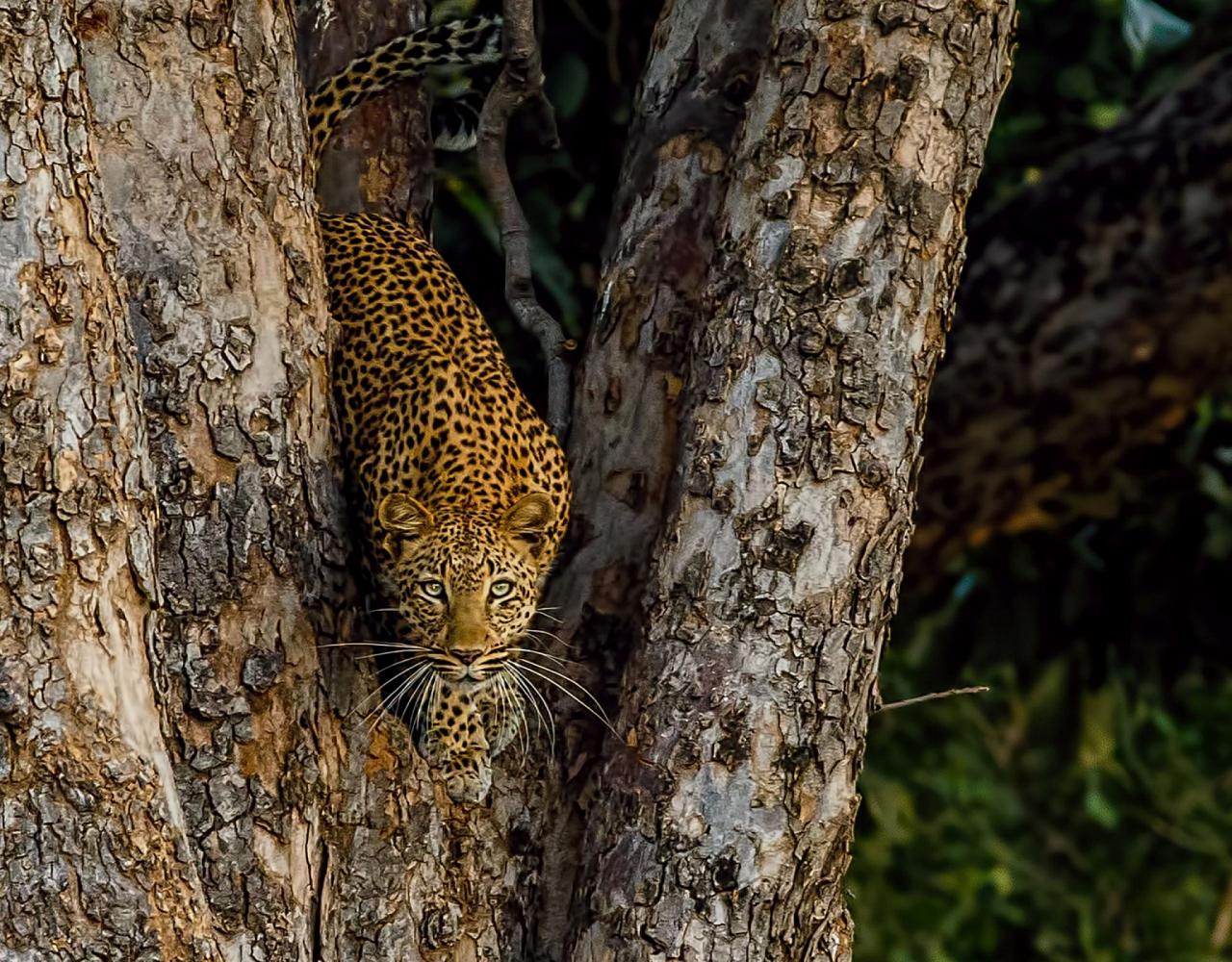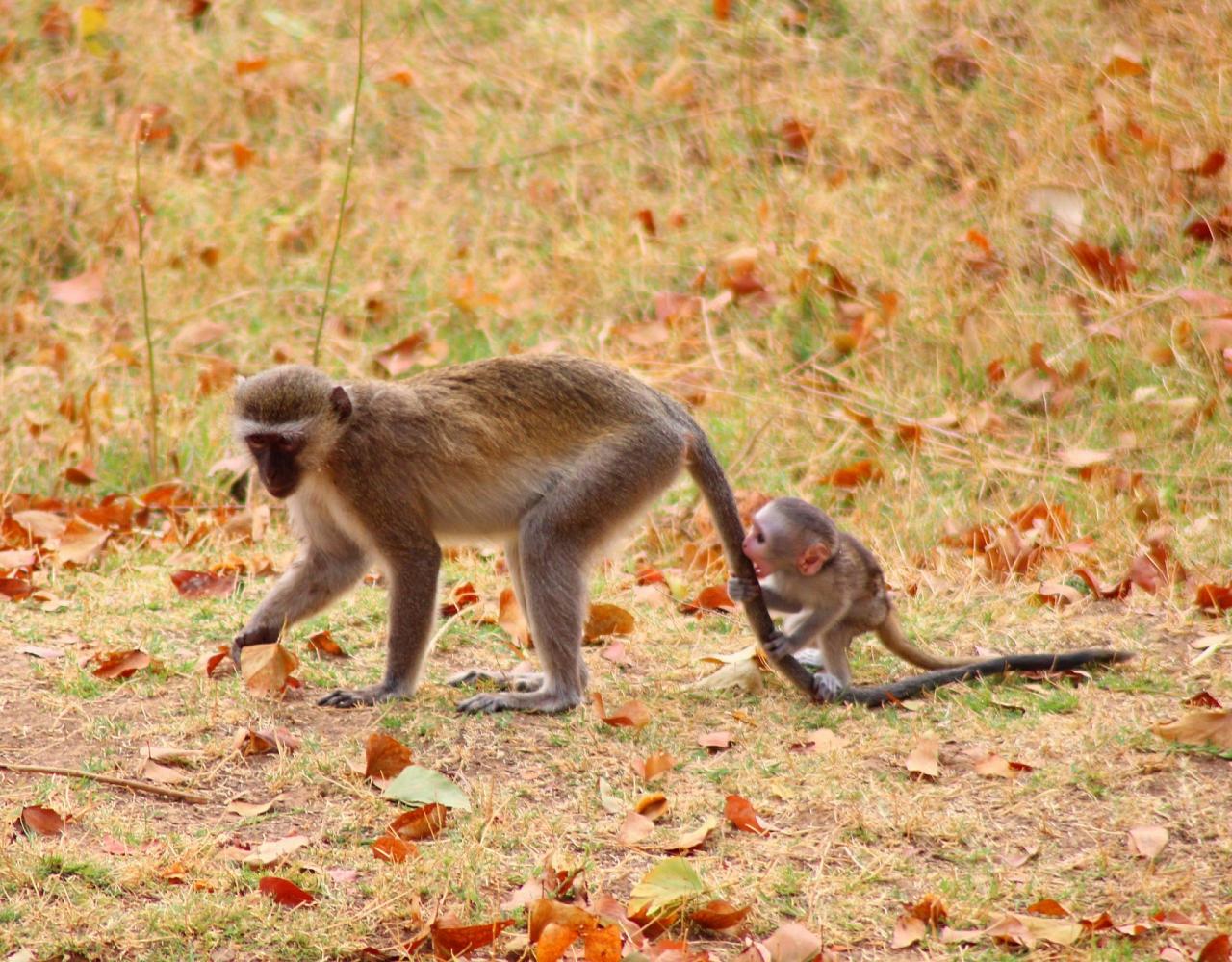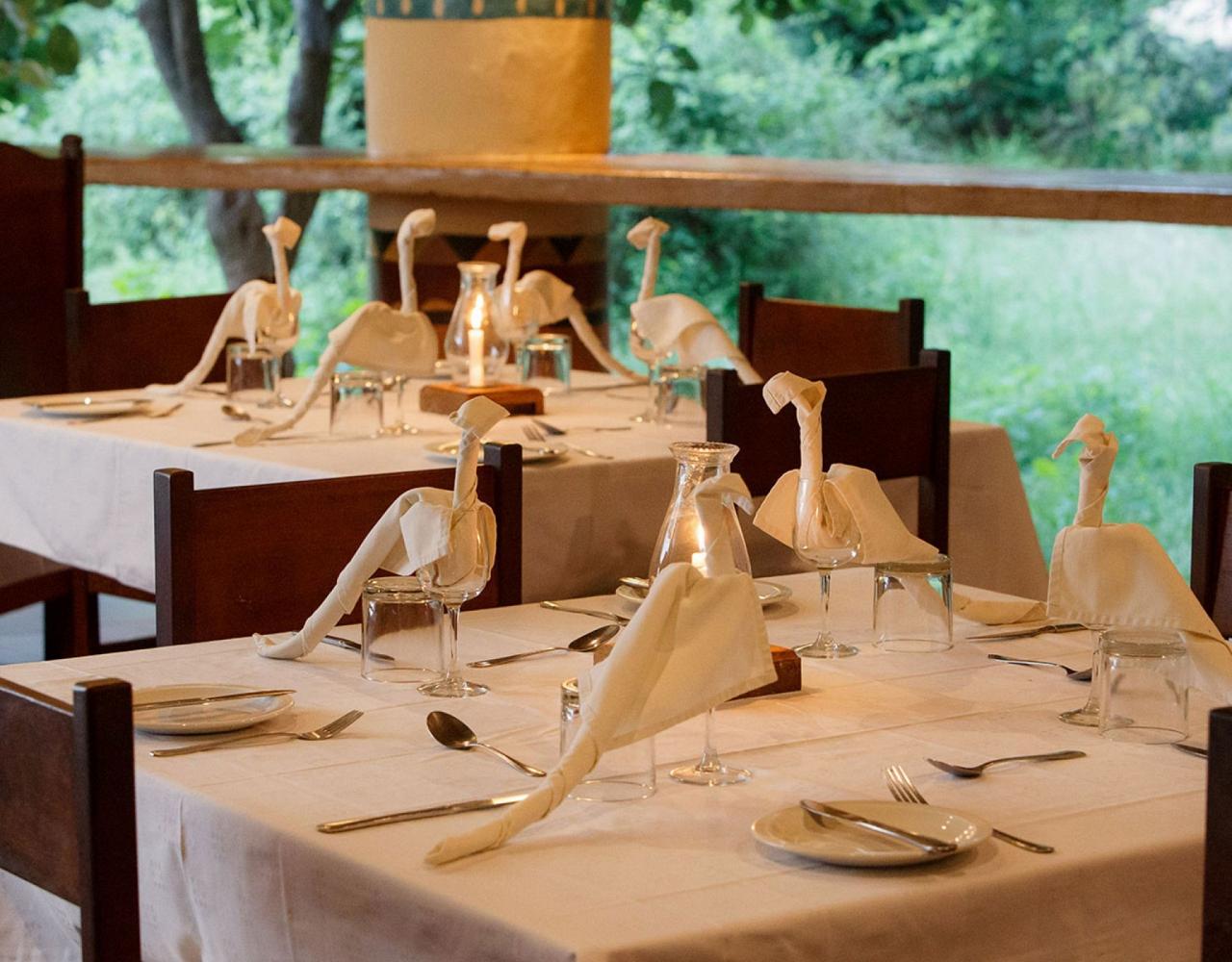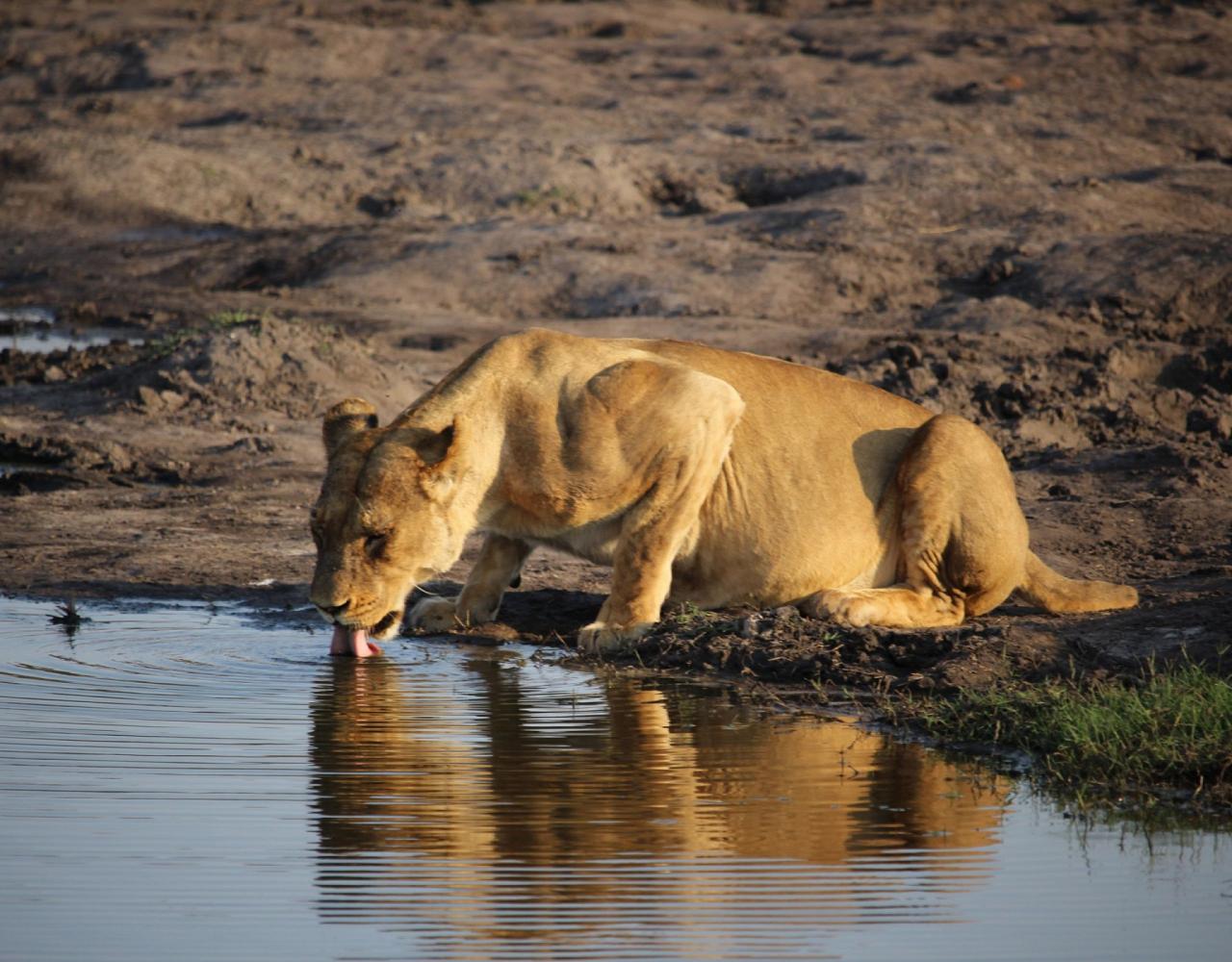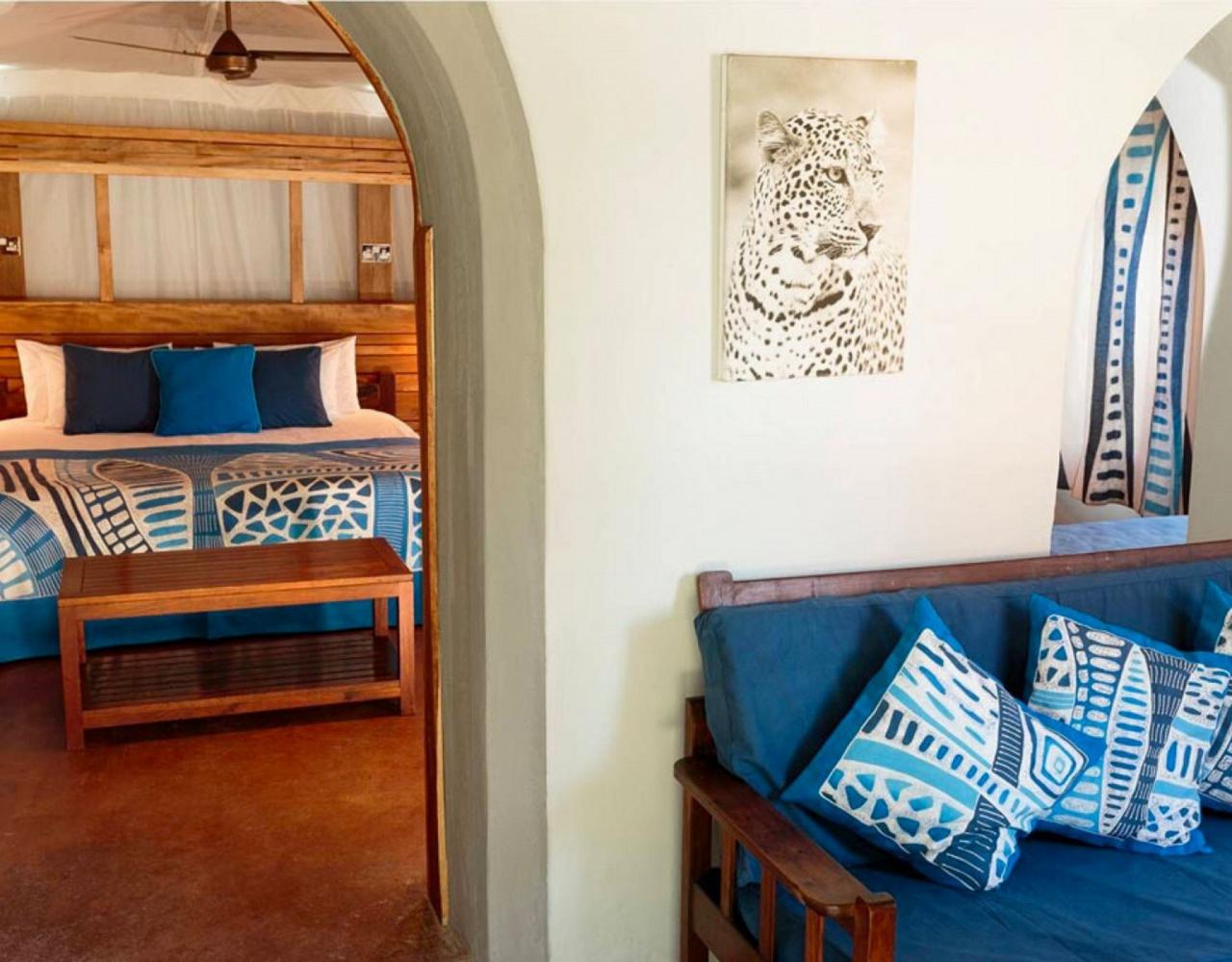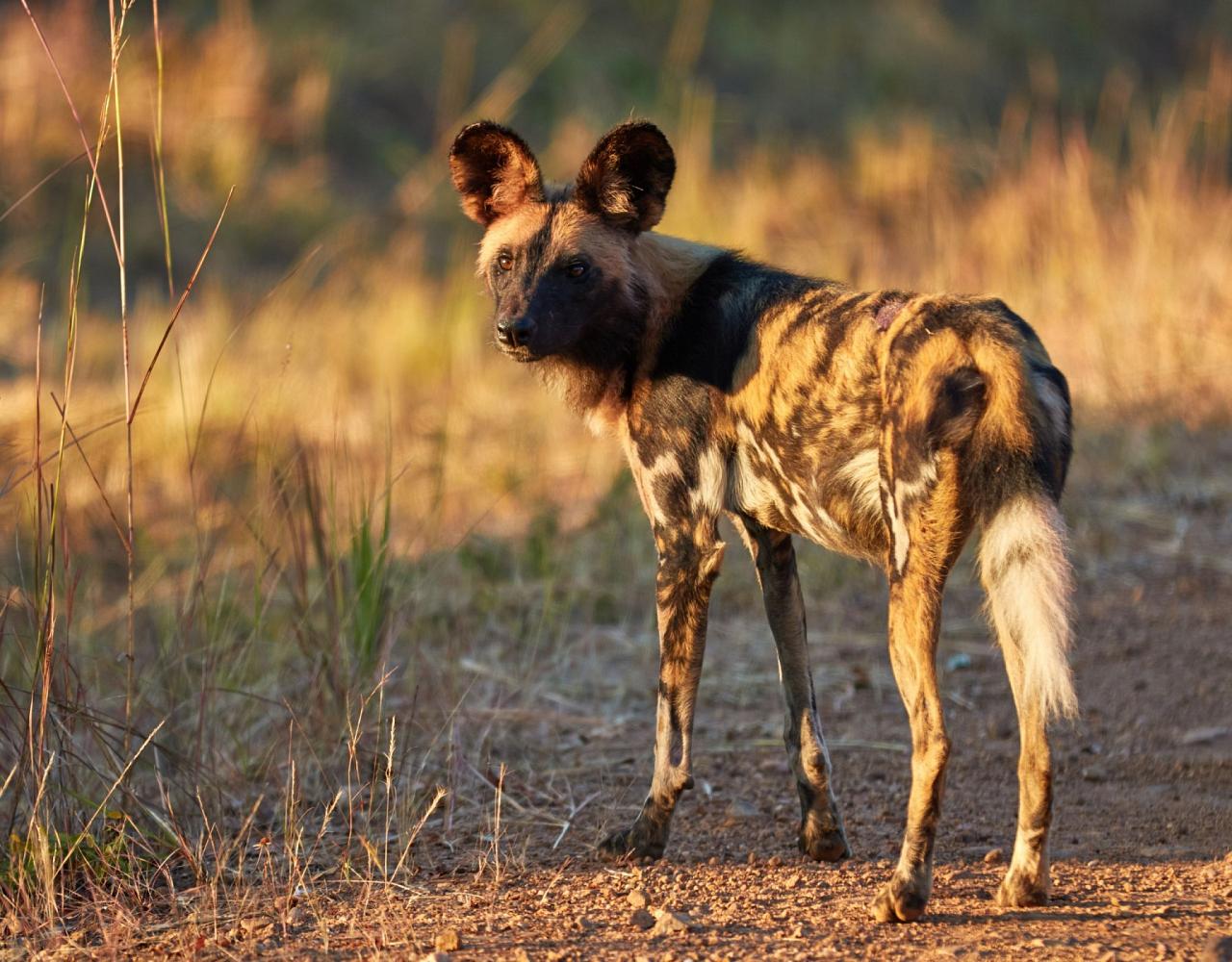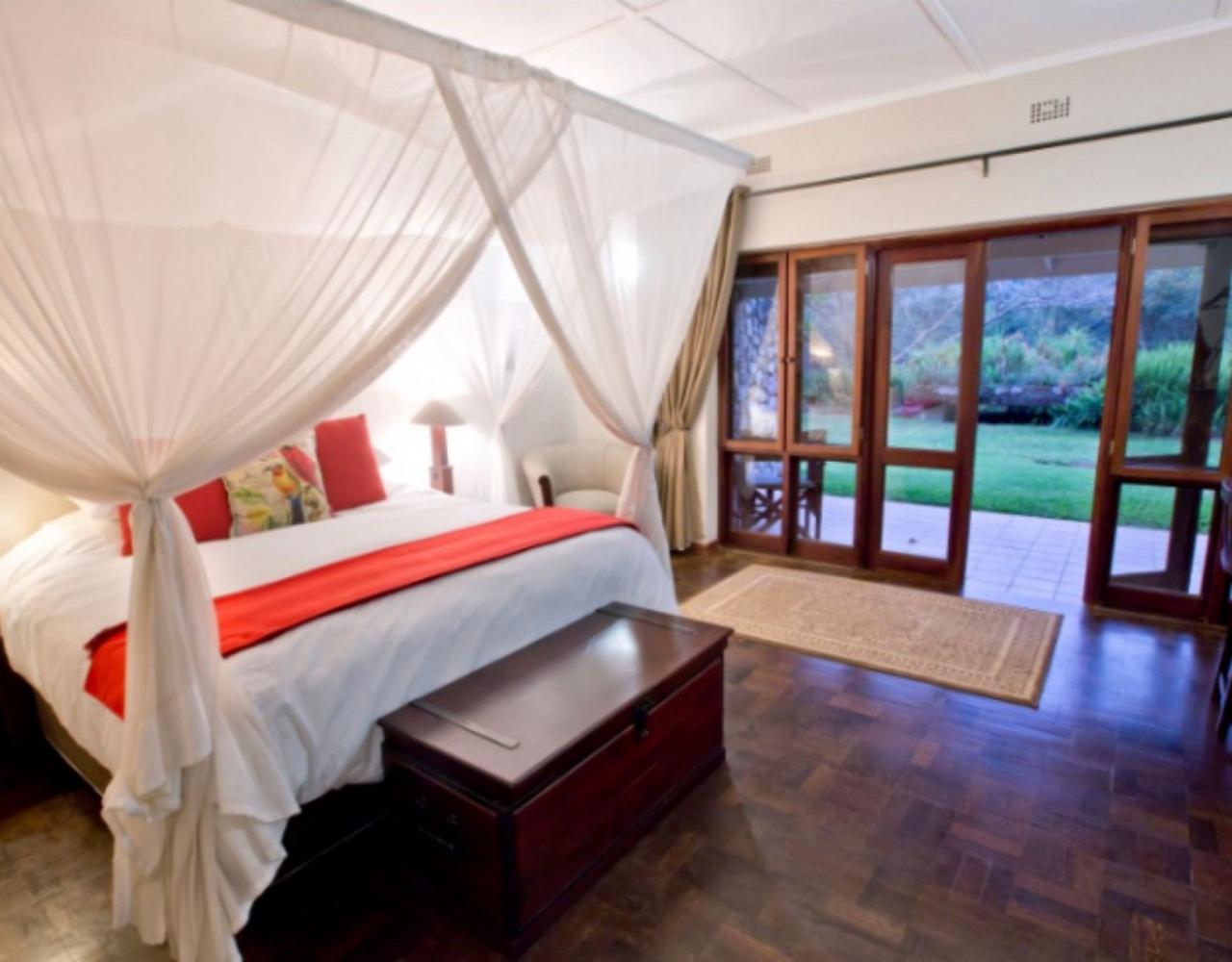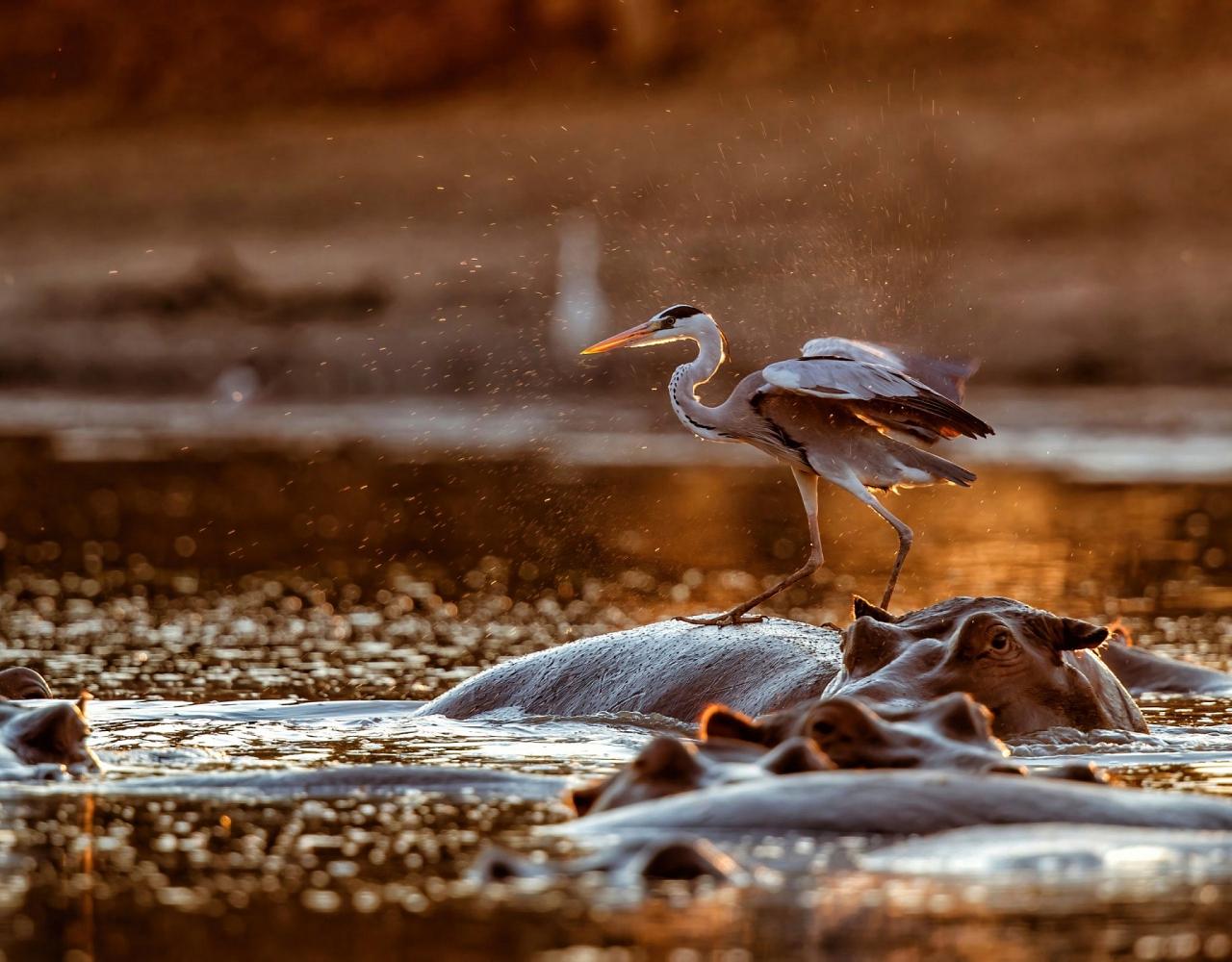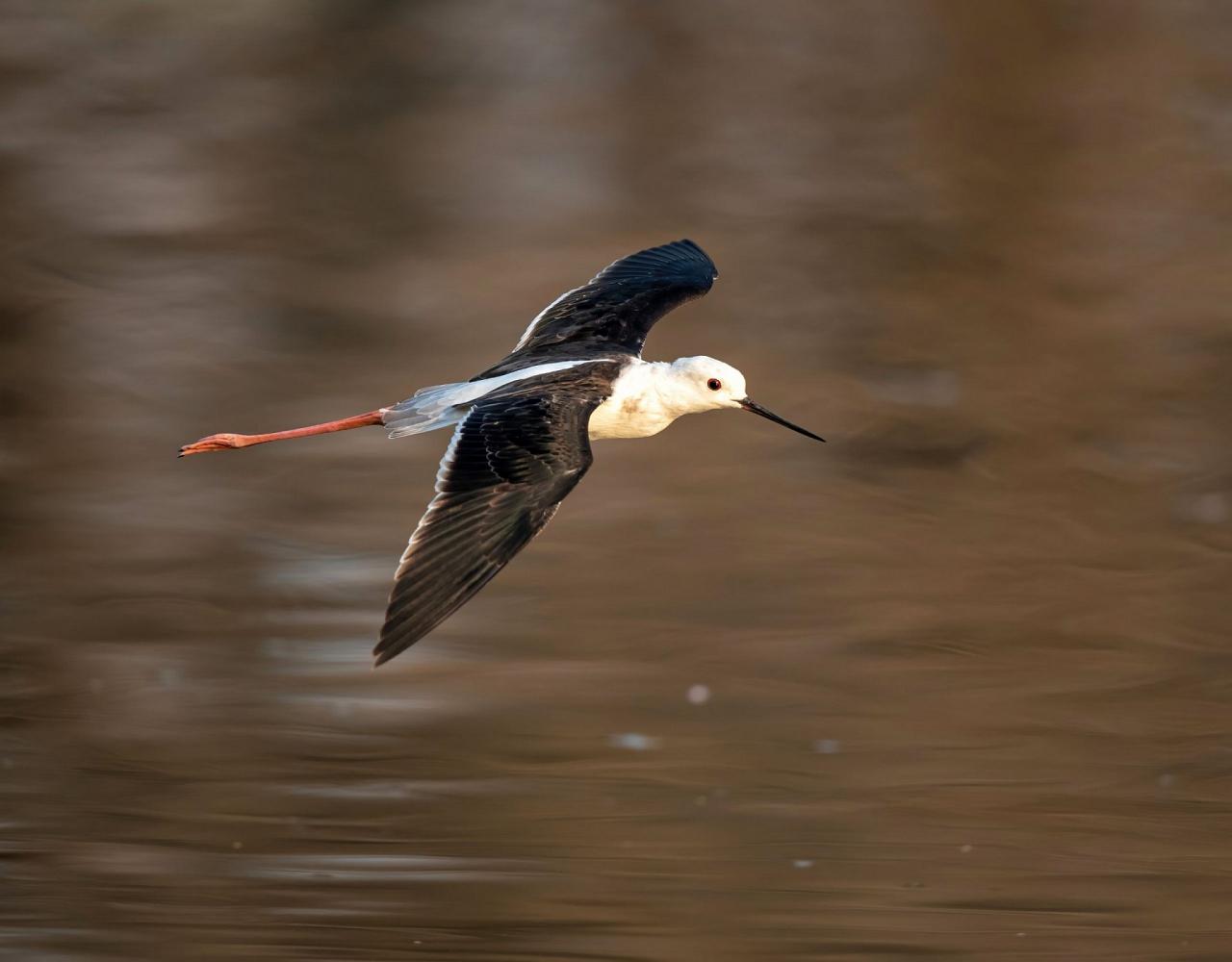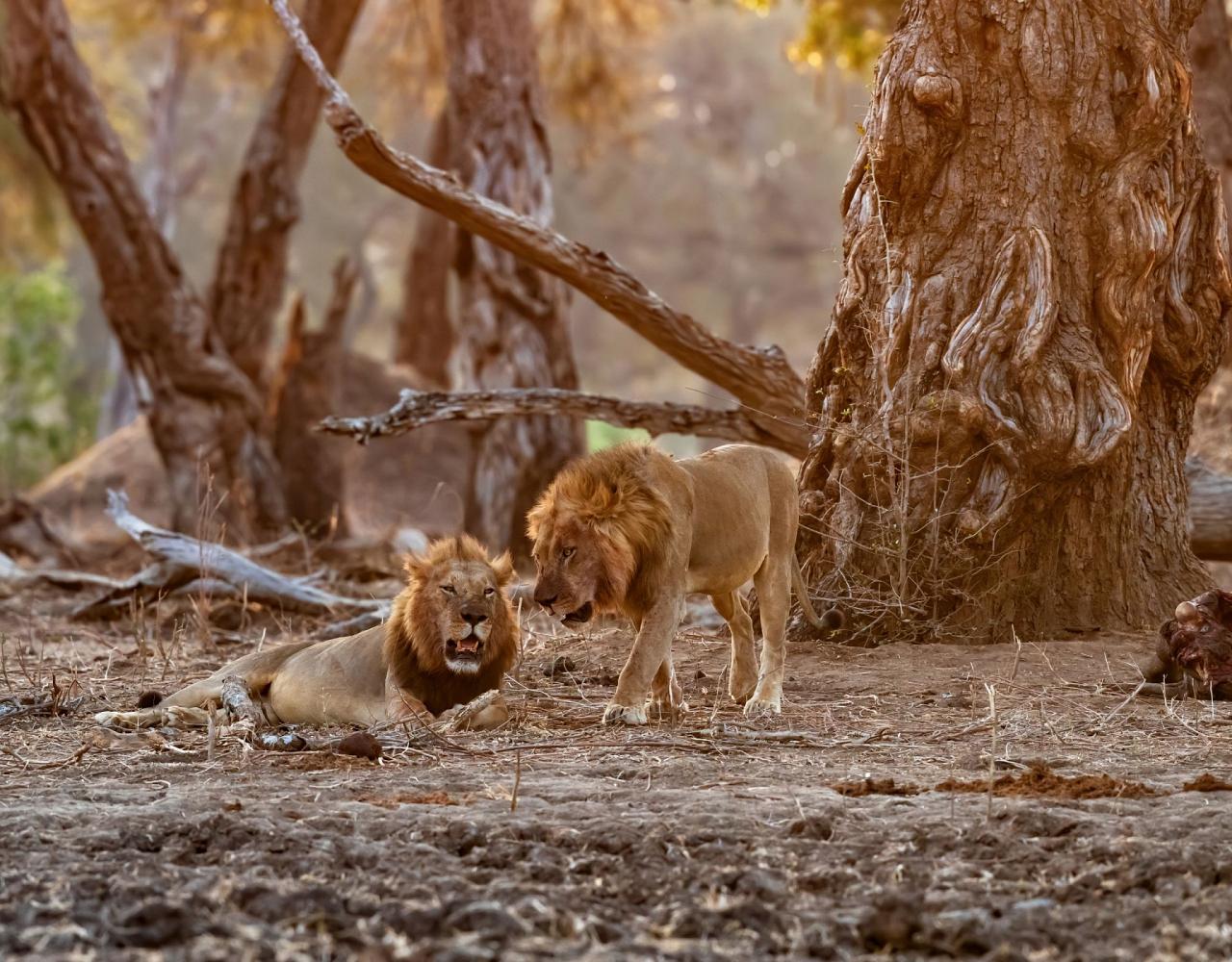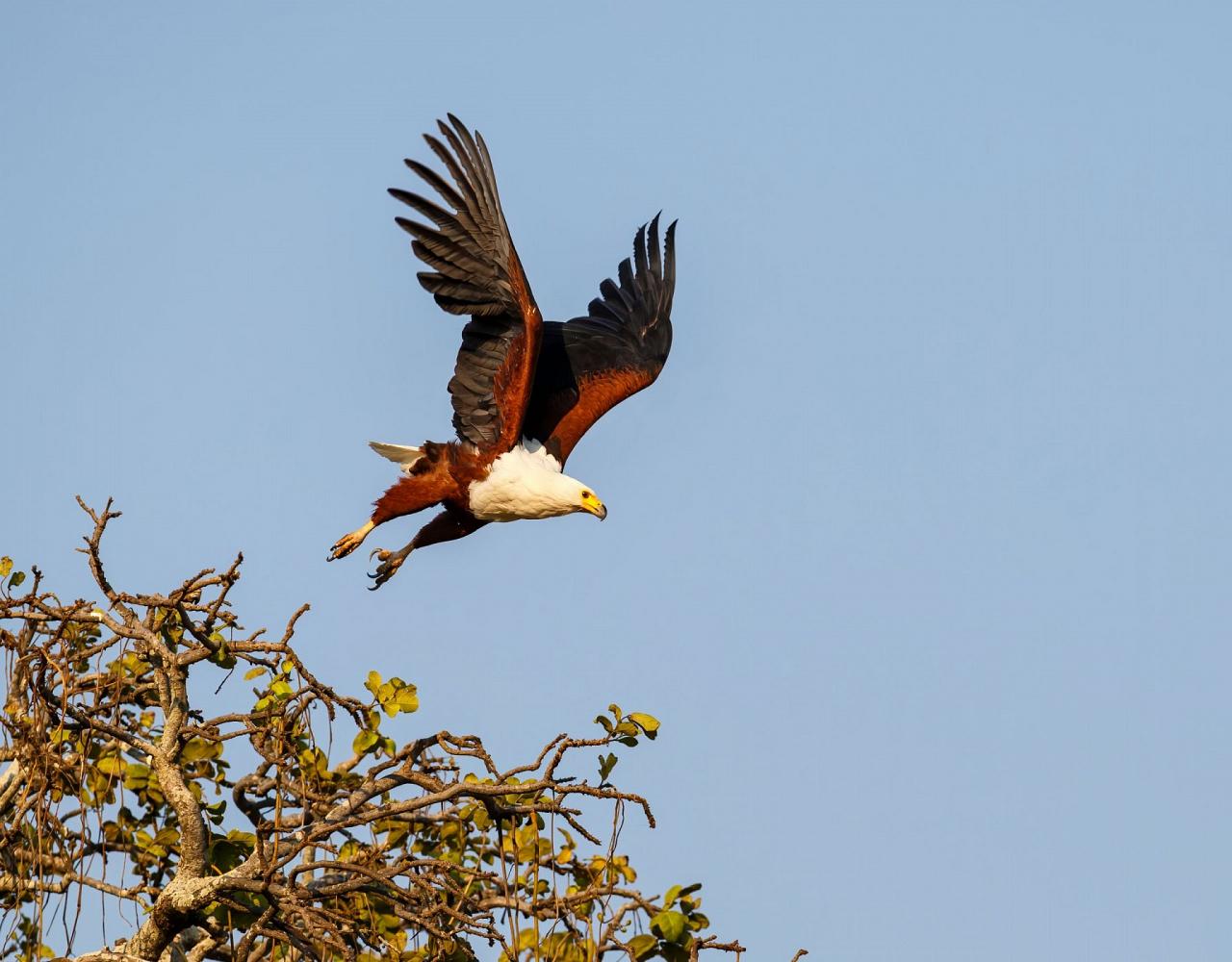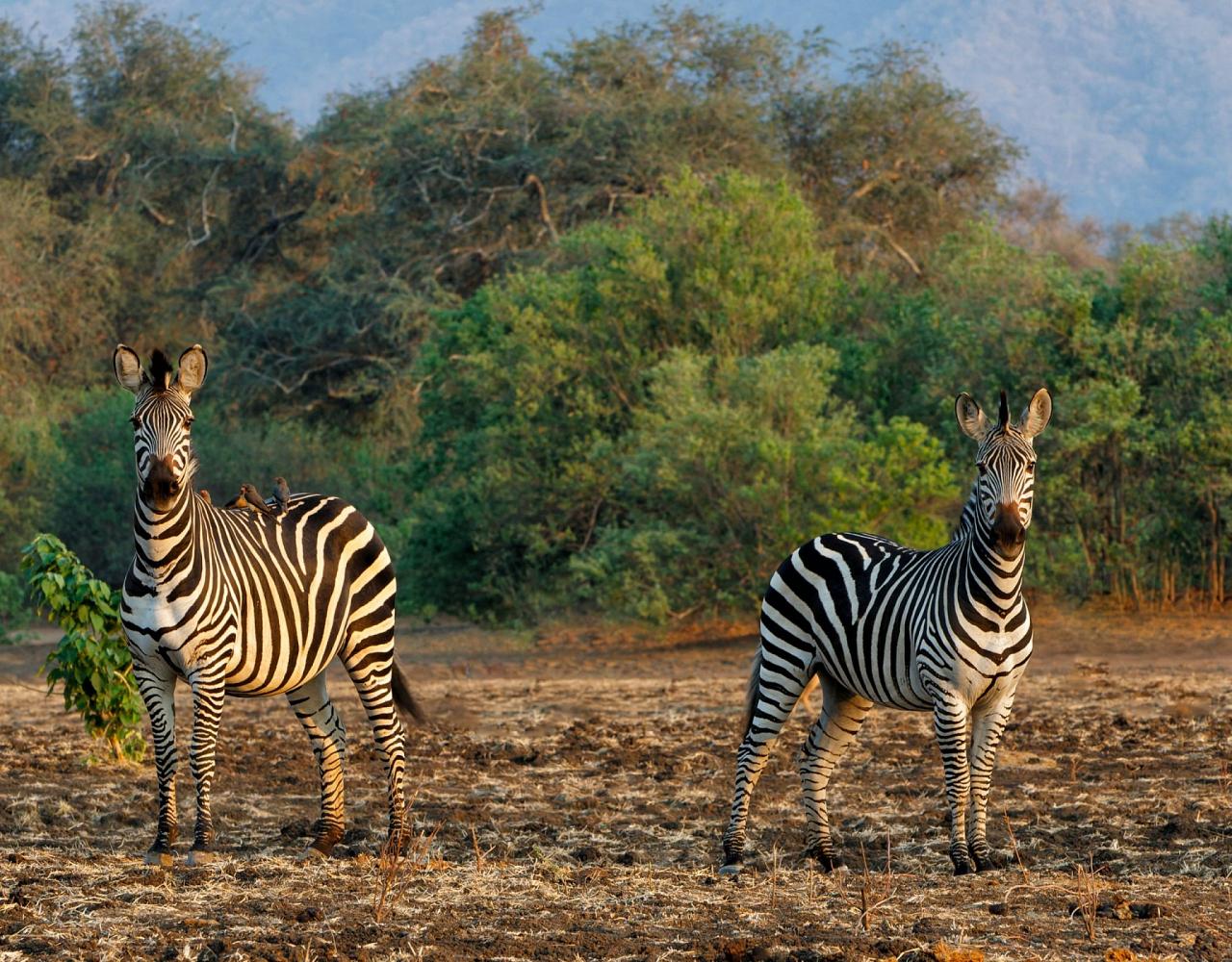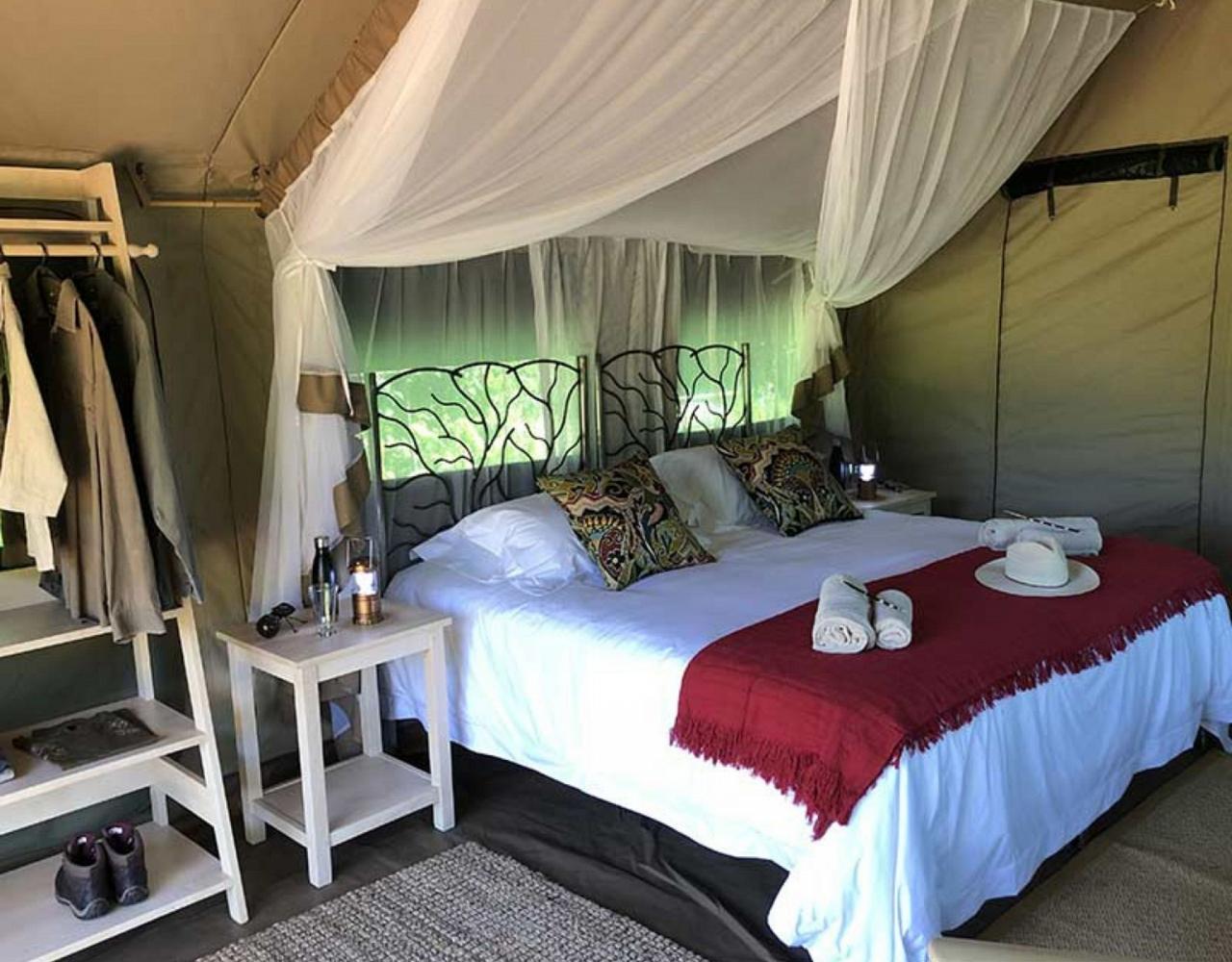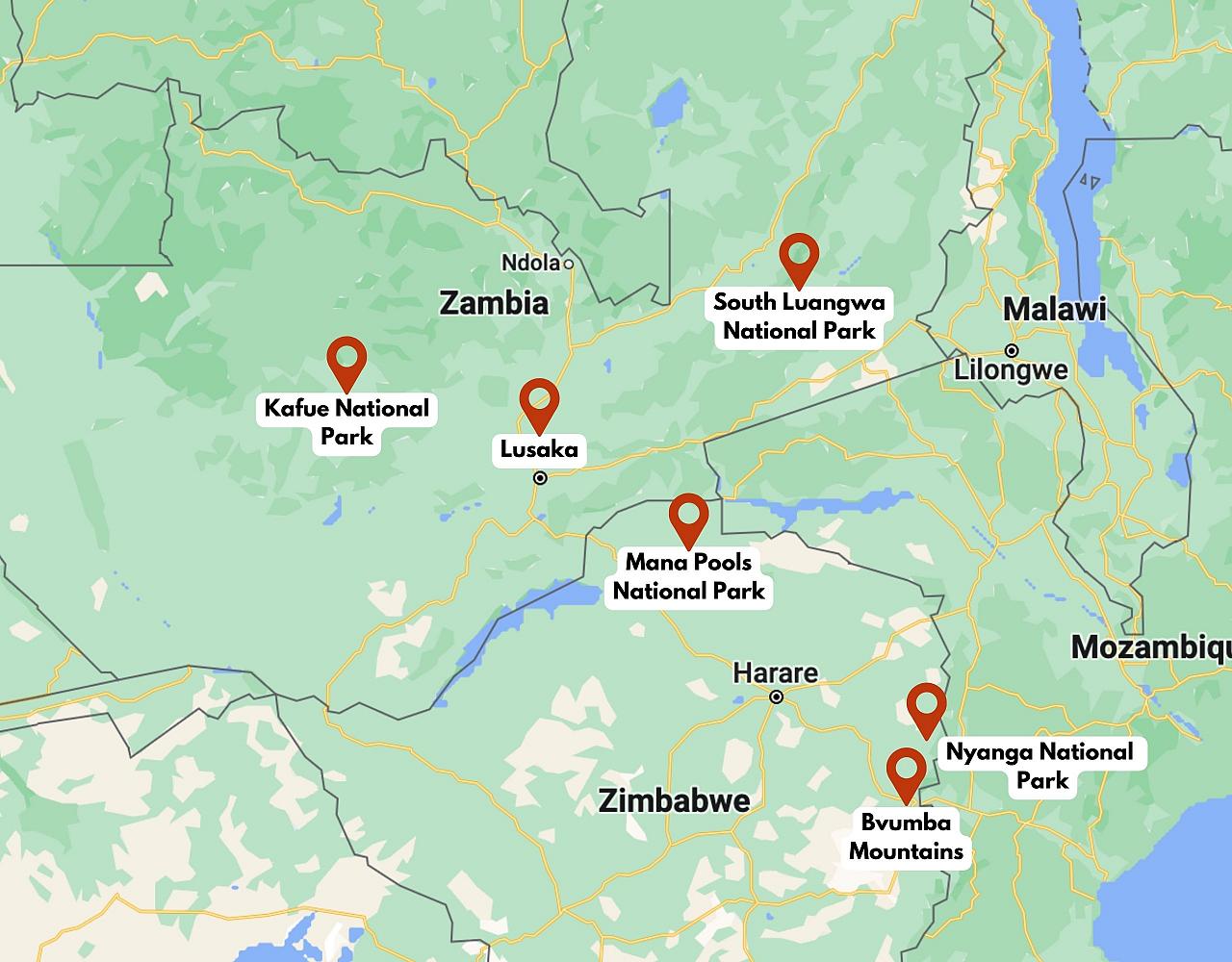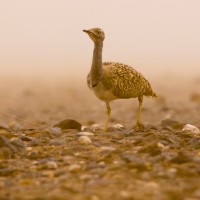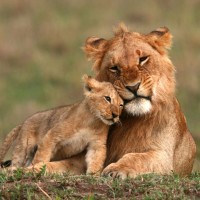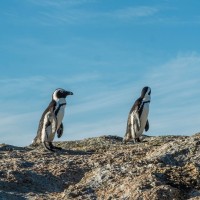- Overview
- Full Itinerary
- Extensions
- Photo Gallery
- Costing
- Travel Details
- Trip Reports
- Guides
- Map
- Know Before You Go
- Other Trips You May Like
Our 2024 Founder’s Trip has been a year in the making, specially crafted to visit parts of Africa not yet featured in Naturalist Journeys’ tours. Zambia and Zimbabwe have done a great job with wildlife conservation and recovery and take their rightful place among more well-known destinations. Our group on this three-week, two country safari is limited to just seven persons plus Peg Abbott of Naturalist Journeys and Zambia’s acclaimed birding guide Frank Willems.
Join us on a spectacular wildlife safari to Zambia and Zimbabwe where we visit stunning national parks to see iconic African wildlife including Elephant, Leopard, Lion, Cheetah, Giraffe, Hippo, and so many more! Birds are prolific and colorful with new species appearing at each location. Feel immersed in the African landscape in our comfortable accommodations, often located right in the national parks, where you can view impressive mammals and birds right from the lodge.
We begin in Lusaka, Zambia, followed by time spent in Kafue and South Luangwa National Parks for eight nights. Kafue National Park is one of Africa’s best kept secrets and we experience amazing game viewing by a variety of activities including game drives, boat, and walking safaris. We then move on to South Luangwa National Park, where the varying habitats and dramatic topography are home to many bird and mammal species, including the endemic Thornicroft’s Giraffe and Cookson’s Wildebeest.
After exploring Zambia, we head to northern Zimbabwe, one of Africa’s most game-rich regions. We explore Mana Pools National Park and its variety of habitats that make it rich in bird species. It is also one of the best places in Africa to see African Wild Dog and other predators. We then have a dramatic change of scenery as we head into the Bvumba Mountains, bordering Mozambique, where we spend three nights in this birder’s paradise. After time spent in the mountains, we head to the Honde Valley to explore Nyanga National Park, a premier birding destination in Zimbabwe. Very few tours reach this location and Frank accompanies us for the full tour, a great treat due to his knowledge of the region’s birds, ecology, and wildlife.
Our main tour ends in Harare, Zimbabwe, but we highly recommend continuing on the post-tour extension to visit the world-renowned Victoria Falls. We spend two days exploring the falls and learning about the flora and fauna in the area, enjoying traditional cuisine and culture, a gorgeous sunset cruise on the Zambezi River, and a visit to an Elephant sanctuary to learn about and observe these gentle giants.
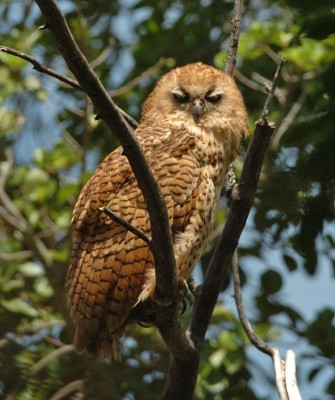
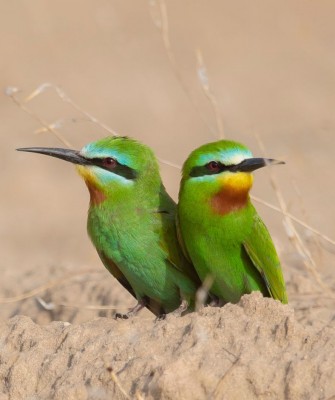
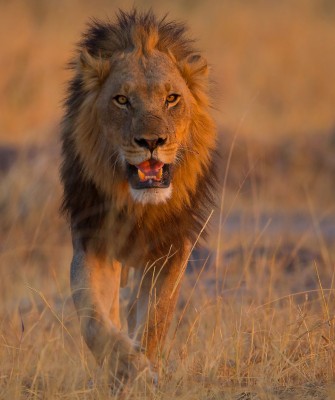
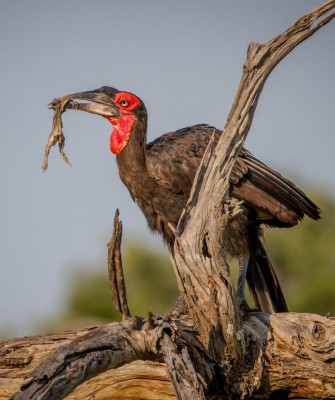
Tour Highlights
- Join an exclusive group of just 7 participants with two knowledgeable guides, Peg Abbott of Naturalist Journeys (our founder) and Frank Willems, acclaimed bird and wildlife expert of the region
- Witness iconic African wildlife viewing in regions that have avoided mass tourism
- Visit Kafue National Park, one of Africa’s best kept secrets with large predators and breeding herds of Elephants
- View the dramatic topography in South Luangwa National Park, home to endemic Thornicroft’s Giraffe and Cookson’s Wildebeest
- Find a great variety of birds by visiting varied habitat including Miombo Woodland
- Watch Elephants, Monkeys, and Hippos right from the lodge
- Spend three nights along the Zambezi River, adjacent to Mana Pools National Park, in one of Africa’s most game-rich regions
- Search for the region’s forest specialty birds in the scenic Bvumba Mountains
- Visit the Honde Valley, a premier birding destination in Zimbabwe, and adjacent to the oldest park in the country, Nyanga National Park, rarely visited on tour itineraries
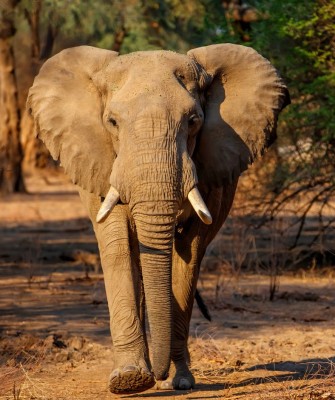
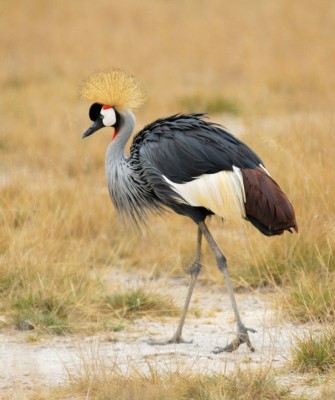
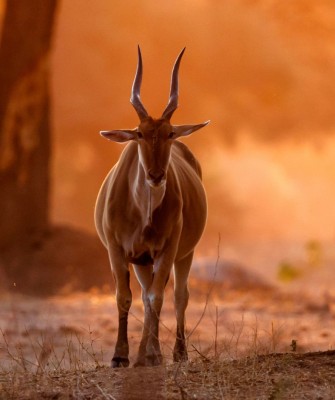
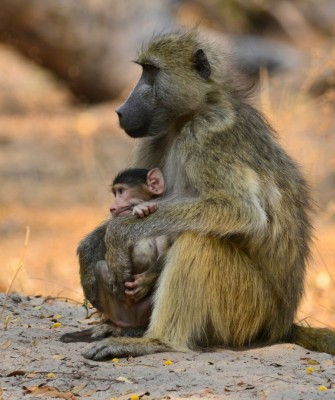
Trip Itinerary
Itineraries are guidelines; variations in itinerary may occur to account for weather, road conditions, closures, etc. and to maximize your experience.
Sat., July 27 Arrival in Lusaka
Welcome to Zambia! Our tour begins in Lusaka, the capital and largest city in Zambia. Please plan to arrive at the Kenneth Kaunda International Airport (LUN) at your leisure. A driver will meet you at the airport and transfer you to our comfortable lodge located outside the busy city. Settle into your peaceful chalet, situated on lush grounds with shady trees.
Accommodations at Pioneer Camp (D)
Sun., July 28 Kafue National Park
We leave Lusaka and head to Kafue National Park, the oldest and largest (22,000 km2) national park in Zambia. The park is named after the Kafue River that cuts through it for 250 km and forms the beautiful Lake Itezhi-Tezhi in the south, which draws large herds of antelopes and Elephants. Kafue is mostly covered in Miombo woodlands, which consist of tropical grasslands, savannahs, and shrublands. Miombo woodlands cover much of central Africa with the most extensive stands occurring in Zambia. They are named after the oak-like miombo trees that dominate the area. In this habitat Racket-tailed Rollers are bold and vocal, a thrill to see and we can seek out Pale-billed Hornbill, Arnott’s Chat, and other specialties. Kafue National Park is one of Africa’s best kept secrets and has avoided mass tourism, which allows us to experience amazing game viewing surrounded by stunning landscapes.
The wildlife in Kafue is some of the richest in Africa. Breeding herds of Elephants and large predators have returned to the park after years of poaching in the 1980s and 1990s. Big cats including several prides of Lions, Cheetah, Leopard and Serval are present. Packs of endangered Wild Dogs can be seen if we’re lucky. Common species include Buffalo, Zebra, and Hippo along with up to twenty species of antelopes. Birds of Prey include Martial Eagle, Wahlberg’s Eagle, and Lizard Buzzard. Eurasian Hoopoe and Southern Ground Hornbill are often seen at close range to our vehicles.
Our lodge is located on the banks of the Kafue River in an excellent location for wildlife and game drives. Sunsets are incredible, and after dinner we often gather around a fire, listening to night sounds and trading conversation with other lodge guests. At mid-day breaks we can enjoy a dip in the infinity pool or birding on the grounds.
Accommodations at Mukambi Safari Lodge (B,L,D)
Mon., July 29 & Tues. July 30 Kafue National Park
We spend our time exploring the spectacular landscapes and abundance of birds and mammals in Kafue National Park. With over 500 species of birds and 150 mammal species, it is an exciting two days. Our game drives offer a great opportunity to explore the vast park. We keep an eye out for the colorful Schalow’s Turaco on sycamore figs along with Malachite Kingfisher, African Green-Pigeon, Crowned Hornbill, delicate Böhm’s Bee-eaters, Wattled and Grey Crowned Cranes, Goliath Heron, Woolly-necked Stork, and many others.
What better way to connect with African nature than a walking safari! We head out with a local guide and guard to track animals and learn more about plant and insect life in the park. Immersing ourselves in the landscape, we listen and watch for birds as we walk through the same trails traversed by antelope and African Buffalo. This is a great way to spy little “bird parties” of Southern Cordonbleu, Red-billed Firefinch and Orange-winged Pytilia, Scarlet-chested Sunbird, Brubru, Chinspot Batis, and beautiful Violet-backed Starling. We may find secretive roosting African Barred or African Scops Owls. Little Bee-eaters are common, and in woodlands we may find the beautiful Swallow-tailed Bee-eater as well.
We take a relaxing boat cruise down the Kafue River, floating past wading Hippos and drinking Elephants. Some of the largest Nile Crocodiles can be found along the riverbanks, which we view from the safety of our boat. This is also a great chance to see some of our more aquatic bird species such as African Finfoot, African Jacana, African Darter, and various colorful kingfishers.
Our safari lodge, located on the border of the national park, is situated right on the banks of the Kafue River. It is the perfect place to relax with a cold drink and gaze across the open landscape scanning for Impala, Elephant, or Hippo right from the verandah of the lodge. In the evening, enjoy gathering around the campfire.
Accommodations at Mukambi Safari Lodge (B,L,D)
Wed., July 31 Transfer to Lusaka
Today is a transition day between the parks. We make our way back to Lusaka and make some birding stops along the way. In the afternoon, we settle into our lodge, relax, and enjoy birding the lush grounds surrounding our chalets.
Accommodations at Pioneer Camp (B,L,D)
Thurs., Aug. 1 Flight to Mfuwe & South Luangwa National Park
Today we embark on the next part of our safari! We have a short flight to Mfuwe where we transfer to our luxurious safari camp that is our home for the next three nights.
Our lodge is perfectly situated at the south entrance to the national park. This makes access for our game drives quick and easy. Our expert local guide takes us to the best locations in the park to spot wildlife. Lions, Buffalo, Impala, Bushbuck, and Puku are common. Wild Dog numbers have increased in recent years and sightings have become more common year-round. Leopards typically hunt at night and if we’re lucky, we spot one on our night game drive. South Luangwa National Park is known as the place to see Leopards and one of the few parks that allows spotlight night drives.
The birdlife in this park is phenomenal and we look for Southern Carmine and White-throated Bee-eaters that both nest in holes in the riverbank, brightly colored Lilian’s Lovebirds, Gray Go-away-birds, three species of cuckoos: Levaillant’s, Klaas’s, and African Emerald around the camp; Three-banded Plover by ponds and streams and Three-banded Courser in the grasslands. Elegant Grey Crowned Cranes join a host of large wading birds and Hamerkop. We may hear a noisy gang of Red-faced Mousebird or Green Woodhoopoe or discover low in the brush, noisy Terrestrial Bulbul. Kingfishers are plentiful, some associated with water and others with woodlands, including Giant, Pied, Gray-headed, Brown-hooded, and Woodland. Overhead we are alert for sightings of Tawny Eagle, Bateleur, African Harrier Hawk, and Banded Snake Eagle. And on our night drives we are on the lookout for the owls and nightjars that call this park home.
Accommodations at Flatdogs Camp (B,L,D)
Fri., Aug. 2 & Sat., Aug. 3 South Luangwa National Park
We spend the next two days exploring the pristine landscapes and unique and abundant wildlife of South Luangwa National Park. Bordered by the Muchinga Escarpment to the north and west and the Luangwa River to the south, the park covers just over 9,000 square kilometers of varying habitats and dramatic topography.
South Luangwa National Park is home to many of the famous African mammals such as Lion, Hyena, Wild Dog, Elephant, and Buffalo, but perhaps the most unique species we may come across is the endemic Thornicroft’s Giraffe. Their distinctive patterns and slightly smaller size differentiate them from other giraffe species in Africa. In addition to the more than 100 mammal species, there are also some 470 bird species that have been found in the park.
Birds we are on the lookout for when out and about include Namaqua Dove, Swainson’s Spurfowl, Double-banded Sandgrouse, Spur-winged Goose, African Openbill, Cardinal Woodpecker, White-browed Coucal, Collared Palm Thrush, Purple-crested Turaco, African Gray Hornbill, and more. Lovely forest birds like Peter’s Twinspot and Sulphur-breasted Bushshrike are possible.
In the afternoons we return to our lodge to unwind. Enjoy a dip in the pool or relax and keep an eye out for Elephants, monkeys, and Hippos right from your porch. With no fences in the game management area, the camp is regularly visited by large herbivores. Besides the amazing wildlife of Zambia, we enjoy delectable meals while looking out over the scenic Luangwa River.
Accommodations at Flatdogs Camp (B,L,D)
Sun., Aug. 4 Zimbabwe
We say goodbye to South Luangwa National Park and the Zambia portion of our safari today and head to Harare, in northeastern Zimbabwe. Today is mostly a travel day and we have included a charter flight to ease this transition that connects through Lusaka. Our elegant bed and breakfast has spacious rooms with large verandahs that overlook a lush garden oasis. We enjoy a mouth-watering three course dinner before turning in for the evening to rest up for the next part of our journey.
Accommodations at York Lodge (B,L,D)
Mon., Aug. 5 Private Charter to Mana Pools National Park
This morning we take a private charter flight to Mana Pools National Park in northern Zimbabwe. Renowned as one of Africa’s most game-rich regions, the national park covers over half a million acres and 378 bird species. The Mana Pools are former channels of the Zambezi River, which borders the park to the north. A steep escarpment rising over 1,000 meters borders the park to the south. During the dry winter months, large herds of Elephant and Buffalo, along with Zebra, many antelope species, and Lion migrate here.
Our small, tented camp is located right on the banks of the Zambezi River, blending seamlessly into the bush while offering a comfortable experience. We enjoy evening campfires, relaxing time in the afternoon watching for Hippos in the river, and delicious catered meals.
Accommodations at Goliath Camp (B,L,D)
Tues., Aug. 6 & Wed., Aug. 7 Exploring Mana Pools National Park
We spend the next two days exploring Mana Pools National Park via game drives, walking safaris, and canoe. We head out early for game drives, hoping to spot many of the mammals that call this park home. The variety of habitats in this huge park make it great for birding. We look for waterbirds along the Zambezi River and the pools. African Skimmer, Long-toed Lapwing, African Sacred Ibis, and a variety of herons, storks, and kingfishers are just some of the many birds we hope to see during our time here.
Some of the memorable birds include Malachite Kingfisher, Broad-billed Roller, Little Bee-eater, Crested Barbet, and African Golden Oriole. There is a grand mix of water birds, and good photo opportunities. Around camp we should see White Helmetshrike, Yellow-bellied Greenbul, Kurrichane Thrush and Pearl-spotted Owlet.
In the evenings, we enjoy a sundowner as we watch the sunset over the Zambezi River. Fiery-necked Nightjar sings us to sleep.
Accommodations at Goliath Camp (B,L,D)
Thurs., Aug. 8 Transfer to Harare
We enjoy a last breakfast along the banks of the Zambezi River and wave goodbye to the Hippos and Elephants before making our way back to Harare via private charter flight that we have booked to ease our travel. We spend the afternoon relaxing at our bed and breakfast.
Accommodations at York Lodge (B,L,D)
Fri., Aug. 9 Transfer to Vumba
Few tours venture to the eastern highlands of Zimbabwe and we are excited to head there today. We travel by road, birding along the way, to Vumba, located in the Bvumba Mountains near the border to Mozambique. These savannah-woodland dominated mountains offer a vastly different landscape and a chance to see many new bird species.
Our comfortable lodge, located in the mountains, is a birdwatcher’s paradise and a great location for finding the more secretive Southern African forest birds including several species endemic to these “Eastern Highlands”. Our cottages have amazing views into Mozambique and are set in secluded gardens.
Accommodations at Seldomseen Lodge (B,L,D)
Sat., Aug. 10 & Sun., Aug. 11 Seldomseen & the Bvumba Mountains
The next two days are spent finding some of the region’s forest specialty birds. We look along cliff and forest edges for soaring Crowned and Long-crested Eagles. We listen for the deep foghorn like calls of the Buff-spotted Flufftail and hopefully catch a glimpse of the elusive Delegorgue’s Pigeon. Roberts’s Warbler and Chirinda Apalis are completely restricted to this mountain range. Among other highly range-restricted and attractive species are Swynnerton’s Robin and Orange Ground-thrush, both of which can be remarkably easy to find here. The delicate likes of Red-faced Crimsonwing and White-tailed Elminia add further flavor. Truly spectacular are the huge Silvery-cheeked Hornbill that roam the forest canopy.
Beyond birds, we put effort into finding the endemic and exquisite Marshall’s Pygmy Chameleon. These remarkable tiny creatures are superbly camouflaged, only detectable with a well-trained eye. Samango Monkeys—the race of which is endemic to the area—are the most commonly seen mammal here and can entertain you for hours with their antics. Sun Squirrels scamper about the surrounding forest and occasionally Blue Duikers and Bushbuck can be seen. We make an effort to spot the elusive Palm Civet at night.
Accommodations at Seldomseen Lodge (B,L,D)
Mon., Aug. 12 Honde Valley & Nyanga National Park
Today we drive to the Honde Valley, one of the premier birding destinations in Zimbabwe. Our destination is at the western edge of the valley, Nyanga National Park, which is one of the oldest national parks in Zimbabwe. The highest point in the country, Mount Nyangani, is located in the central part of the national park. There are numerous streams and rivers in the park and hillsides are covered in dense pine and wattle forests. This area also has numerous tea plantations on the hillsides of the valley.
Our comfortable lodge is surrounded by lush forest, making it a fantastic birding location. Each room has a verandah overlooking the forest, creating a peaceful and relaxing setting. It has been called one of the best-kept secrets of Zimbabwe!
Accommodations at Aberfoyle Lodge (B,L,D)
Tues., Aug. 13 & Wed., Aug. 14 Nyanga National Park
We spend the next couple of days exploring Nyanga National Park. There are several nearby waterfalls we can enjoy after a short hike. Our lodge is a birding hotspot and along with a local bird expert, we walk the trails and grounds looking for species such as Green-backed Woodpecker, Stripe-cheeked Greenbul, Yellow-bellied Waxbill, Augur Buzzard, and many others. Even Palm-nut Vulture have been known to occur on the golf course at the lodge. Guerney’s Sugarbird, Bronze Sunbird, and Malachite Sunbird are among the striking specials that grace the high-altitude grasslands, while Wailing and Wing-snapping Cisticola add subtle beauty.
Our lodge is situated by both forest and extensive tea plantations, a beautiful setting rich in biodiversity. In the evenings, we enjoy delicious meals prepared by the lodge’s excellent chef.
Accommodations at Aberfoyle Lodge (B,L,D)
Thurs., Aug. 15 Transfer to Harare
Today we depart Nyanga National Park and head back to our familiar bed and breakfast in Harare. We relax in the afternoon.
Accommodations at York Lodge (B,L,D)
Fri., Aug. 16 Departures or Victoria Falls Extension
After breakfast we head to the Robert Gabriel Mugabe International Airport (HRE) in Harare for flights home. (B)
Victoria Falls Post-Tour Extension
Itineraries are guidelines; variations in itinerary may occur to account for weather, road conditions, closures, etc. and to maximize your experience.
Fri., Aug. 16 : Victoria Falls Extension
For those continuing on the extension, we take you to the airport for a short flight to Victoria Falls, Zimbabwe. You are met at the airport and taken to our comfortable accommodations located on the outskirts of town with spectacular views. After checking in, we set out on our tour of Victoria Falls. One of the world’s most impressive waterfalls at a width of one mile, the sight and sound of Victoria Falls leaves you filled with awe. A local guide accompanies us on our tour through the rainforest and gives us a brief history of the falls as well as detailing the flora and fauna that surrounds us. After spending a couple of hours in this beautiful and unique landscape, we head to town for lunch at an iconic restaurant with delicious food and staggering views.
After a delectable lunch, we take a sunset cruise on the Zambezi River, which creates the border between Zimbabwe and Zambia. There are endless photo opportunities against the often-spectacular African sunset. Flocks of birds skim the water, including the gracious Rock Pratincole, and we have the opportunity to see Hippo, Crocodile, and Elephant.
As if our day couldn’t get any better with the spectacular Victoria Falls and relaxing sunset cruise on the Zambezi River, we end with a unique cultural experience and dinner at the Boma Dinner & Drum Show. Traditional Zimbabwean dishes, including a variety of game meats, is accompanied by entertainment from traditional dancers, the Sangoma (story teller), and a local fortune teller.
Accommodations at the Victoria Falls Bed and Breakfast (L,D)
Sat., Aug. 17 : Zambezi National Park
We have an early breakfast in order to leave by 6:00 AM. This morning, we enjoy an exciting game drive in Zambezi National Park. The park borders the Zambezi River for approximately 25 miles and consists of habitats ranging from dense rainforest habitat, watered by spray from Victoria Falls, to mopane woodlands and the dry open grasslands of the Chamabonda Vlei. Large mammals found in the park include Elephant, Lion, Buffalo, and Leopard. Over 400 bird species have been recorded in the park. We explore this vast wilderness for an exceptional uncontrived bush experience!
In the afternoon, we have a very unique opportunity to spend time and connect with Elephants. We learn about these enormous mammals, including their history and threats facing their populations. During a venture out into the bush, we spend time with these gentle creatures and witness the special relationship they have with their keepers. This is an experience you won’t soon forget!
In the evening, we head deep in the heart of the Chinotimba township for a dining experience like no other. Dusty Road, located in the buzzing township, offers us traditional cuisine and atmosphere that is an experience not to be missed. We enjoy our last evening together and we share highlights and memories of the journey.
Accommodations at the Victoria Falls Bed and Breakfast (B,L,D)
Sun., Aug. 18 : Departures
After an early breakfast, we depart for the Victoria Falls Airport and our flights home. (B)
Cost of the Journey
The cost of this 21-Day Zambia-Zimbabwe Safari is per person, based on occupancy: $19,500 DBL / $21,130 SGL. This cost includes accommodations for 20 nights, all meals as noted in the itinerary (B,L,D), all land transportation, game park and other entry fees, and all internal flights and the charter flight between countries.
Tour cost does not include: transportation from your home city to Lusaka and from Harare, optional activities, or items of a personal nature such as laundry, telephone charges, gratuities for guides, lodges and drivers, beverages from the bar or personal, medical, and cancellation insurance.
The cost of the Victoria Falls extension is $1140 DBL / $1290 SGL.
Travel Details
Please plan to make air travel plans only after the minimum group size has been met. We will send you a confirmation email as soon as the trip has been confirmed.
Arrival Airport: Kenneth Kaunda International Airport (LUN) in Lusaka, Zambia
Arrival Details: Please plan flights to arrive July 27, 2024 at your leisure.
Departure Airport: Robert Gabriel Mugabe International Airport (HRE) in Harare, Zimbabwe
Departure Details: Plan flights to depart August 16, 2024, at your leisure.
Extension Departure Airport: Victoria Falls Airport (VFA) in Victoria Falls, Zimbabwe
Extension Departure Details: Plan flights to depart August 18, 2024, at your leisure.
Travel Tips: We strongly recommend arriving a day early to rest up from your travels and avoid any flight delays. We can book you an early night at our first night lodge, the Pioneer Camp. The lodge is located outside the busy city and situated on lush grounds with shady trees. There is a restaurant and bar on site and it’s the perfect place to relax after a long flight.
Entry Requirements: See "Essential Information" section under the "Know Before You Go” tab.
Browse below for trip reports and species lists from past versions of this and other tours from this destination.
Zambia & Zimbabwe
- July 2024
-
Peg Abbott
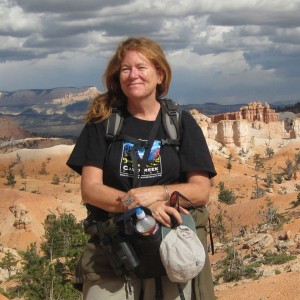
Peg Abbott is the owner and lead guide of Naturalist Journeys, LLC. She has been designing, guiding, and organizing natural history tours for more than 25 years, working for the National Audubon Society and other organizations before launching Naturalist Journeys, LLC in 1998. Her work has taken her from Alaska to Africa and Argentina, as well as many other locations around the world. She has conducted research on several bird and mammal species and keeps a close interest in Yellowstone and Mexican wolf reintroduction projects. Her interests include all aspects of natural history and geology. After 20 years in and around the Yellowstone area, Peg relocated in 2003 to the birding mecca of Portal, AZ.
Photo credit: Carol Simon
Other trips with Peg Abbott
-
 Incredible Ecuador: Chocó GaloreOctober 2 - 11, 2025
Incredible Ecuador: Chocó GaloreOctober 2 - 11, 2025 -
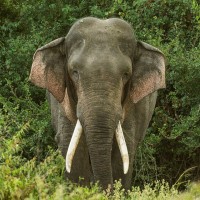 Island of Wonder: Birds & Nature of Sri Lanka FULL - Check out Wild Borneo: Endemic Birding & Nature!November 10 - 22, 2025, w/Mannar Island extension
Island of Wonder: Birds & Nature of Sri Lanka FULL - Check out Wild Borneo: Endemic Birding & Nature!November 10 - 22, 2025, w/Mannar Island extension -
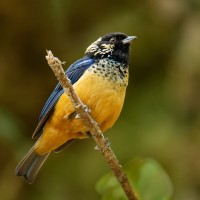 NEW! New Year at Tranquilo BayDecember 30, 2025 - January 7, 2026
NEW! New Year at Tranquilo BayDecember 30, 2025 - January 7, 2026 -
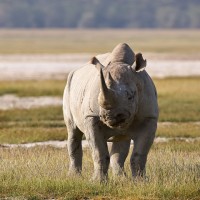 Tanzania: Wildlife & Birding Safari FULL - Check out Southern Tanzania in September 2025!February 9 - 22, 2026, w/Amboseli & Nairobi National Parks extension
Tanzania: Wildlife & Birding Safari FULL - Check out Southern Tanzania in September 2025!February 9 - 22, 2026, w/Amboseli & Nairobi National Parks extension -
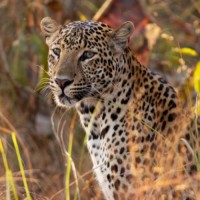 Big Cats & Breathtaking Birds of India FULL - Check out Southern India’s Western Ghats!March 9 - 26, 2026, w/Pallas's Cat extension
Big Cats & Breathtaking Birds of India FULL - Check out Southern India’s Western Ghats!March 9 - 26, 2026, w/Pallas's Cat extension -
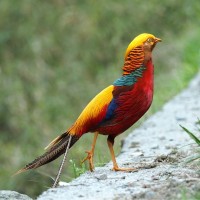 China’s Sichuan Basin & Tibetan Plateau FULL - Check out Thailand: Birding & Nature!June 11 - 26, 2026
China’s Sichuan Basin & Tibetan Plateau FULL - Check out Thailand: Birding & Nature!June 11 - 26, 2026
-
-
Frank Willems — Zambia & Zimbabwe Expert
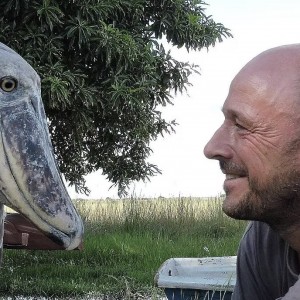
Frank is Zambia’s leading ornithologist and ecologist. Being from Dutch origin, he worked with the Dutch ornithology trust SOVON after obtaining his MSc in Ecology from Nijmegen University. Most of his professional work focused on the breeding ecology and population dynamics of birds in the Netherlands. His involvement in Foundation WIWO focused on bird research and training projects mainly in Russia and Iran.
He came to Zambia with his wife Inge in early 2008 to work with Kasanka Trust on the management of Kasanka and Lavushi Manda National Parks, as well as Shoebill Island Camp in Bangweulu Wetlands. Tasks varied from mammal and bird monitoring, supervising PhD studies on Shoebill, Kinda Baboon and Straw-coloured Fruit Bat, facilitating film crews and writing management plans, to anti-poaching activities, building scout camps and bridges, creating firebreaks, and filling potholes in the dirt roads. The very Bangweulu Shoebills prominently feature in BBC's monumental "Africa" production, alongside Kasanka's mega-colony of Straw-coloured Fruit Bats (the world’s largest mammal migration) and the eagles preying on them, both facilitated by Frank.
Since late 2017 Frank and family, now based near Fringilla, Chisamba, run their own company Kigelia Solutions. Major projects since have included the Birds of Zambia app, a biodiversity survey of the Mafinga Mountains with the BirdLife partner BirdWatch Zambia, an NHK film production on African Skimmer, consultations linked to community conservancies in Mpumba, the creation and management of Kalwelwa Bushcamp in Mwinilunga, and the creation of Birding Zambia.
Side activities include the function of ‘Zambian Bird Recorder’ and Technical Advisor of BirdWatch Zambia, and country rep for African Bird Club. Several of his free-time explorations have focused on remote and unexplored parts of the Mwinilunga district. The large evergreen forests he and others identified using Google Earth, prove to hold real surprises like Vermiculated Fishing-owl and Spot-breasted Ibis. Frank is determined to ultimately create a large conservancy to protect Mwinilunga’s rich biodiversity.
From a young age, Frank has guided and trained people, in the Netherlands, Zambia, and many other countries. He loves sharing his passion for and knowledge of the bush. During his twelve years in Zambia, he guided numerous groups in numerous places, including tens of film crews and research groups, photographers and journalists.Other trips with Frank Willems — Zambia & Zimbabwe Expert
Essential Information +
Pace & Protocols +
Packing List +
Suggested Reading List +
Useful Links +
Photo credits: Banners: Elephant in Mana Pools National Park, Saddle-billed Stork, Cheetah, Zebra, Hippo, Wild African Dogs, Elephant Thumbnails: Pel's Fishing Owl, Blue-cheeked Bee-eater, Lion, Southern Ground Hornbill, Elephant, Gray-crowned Crane, Common Eland, Baboon








